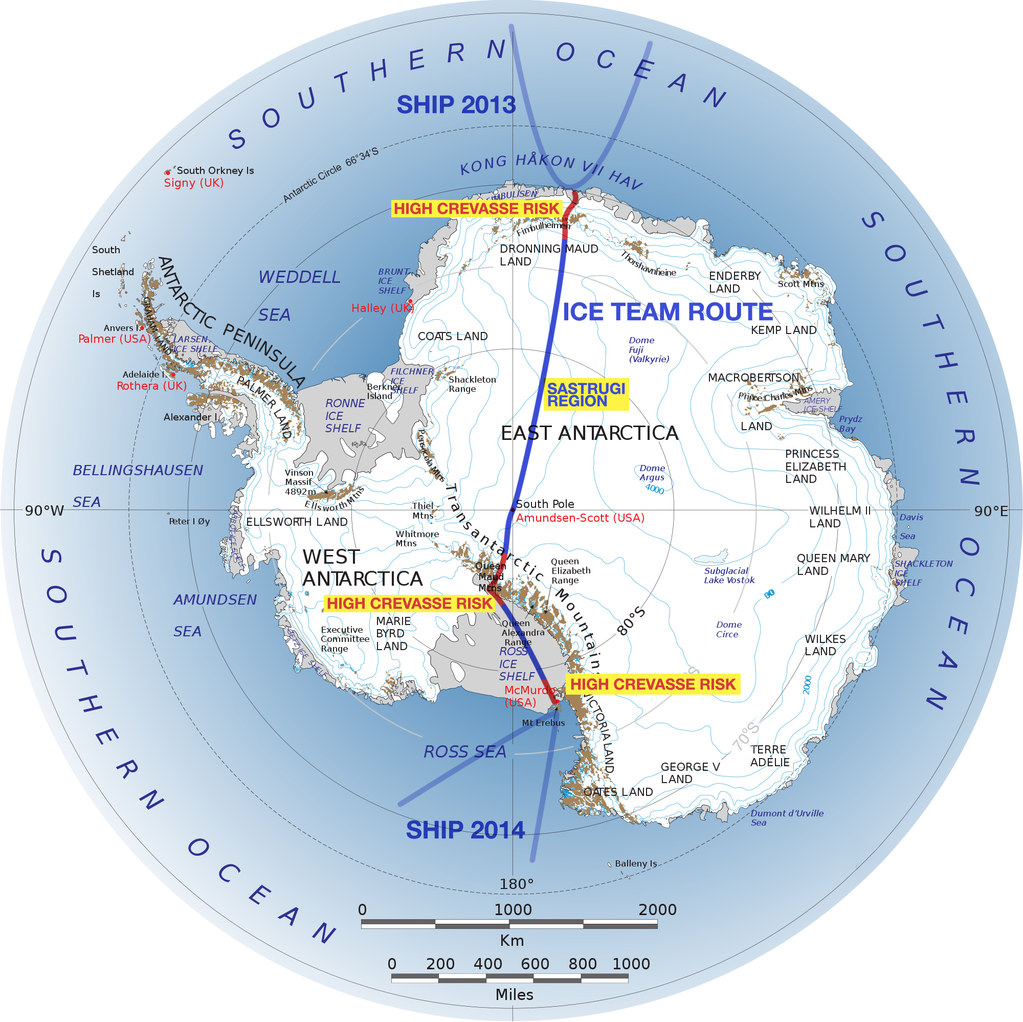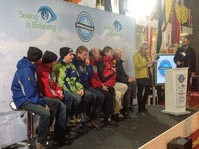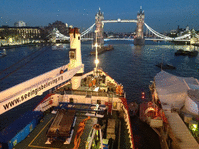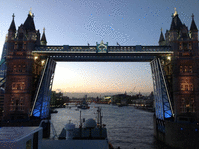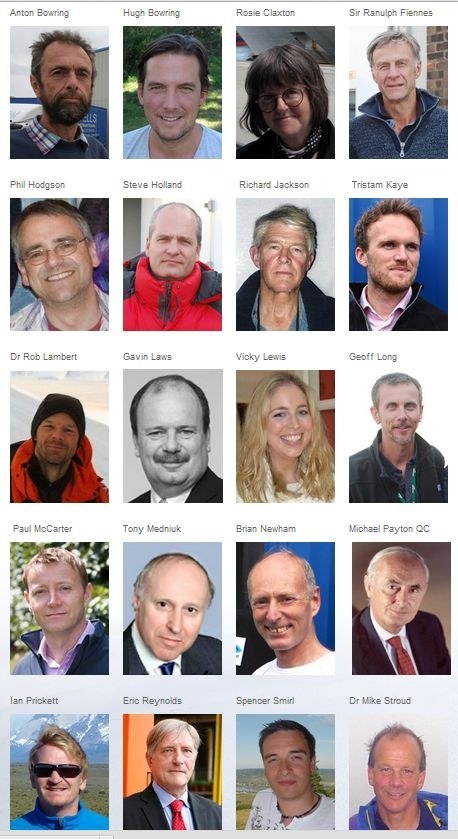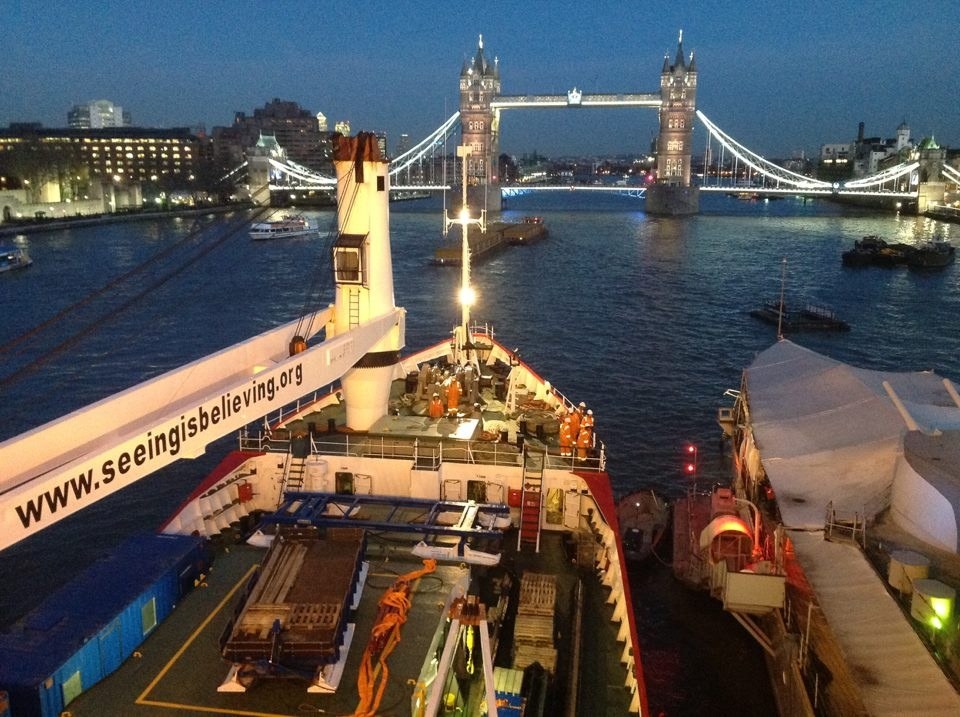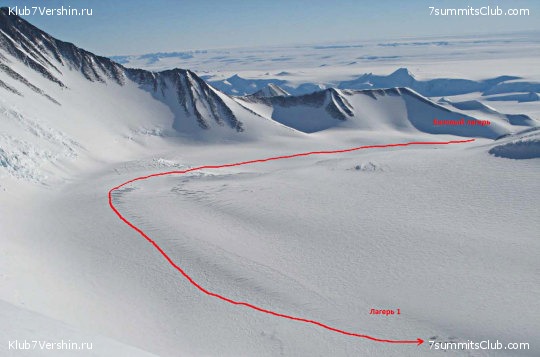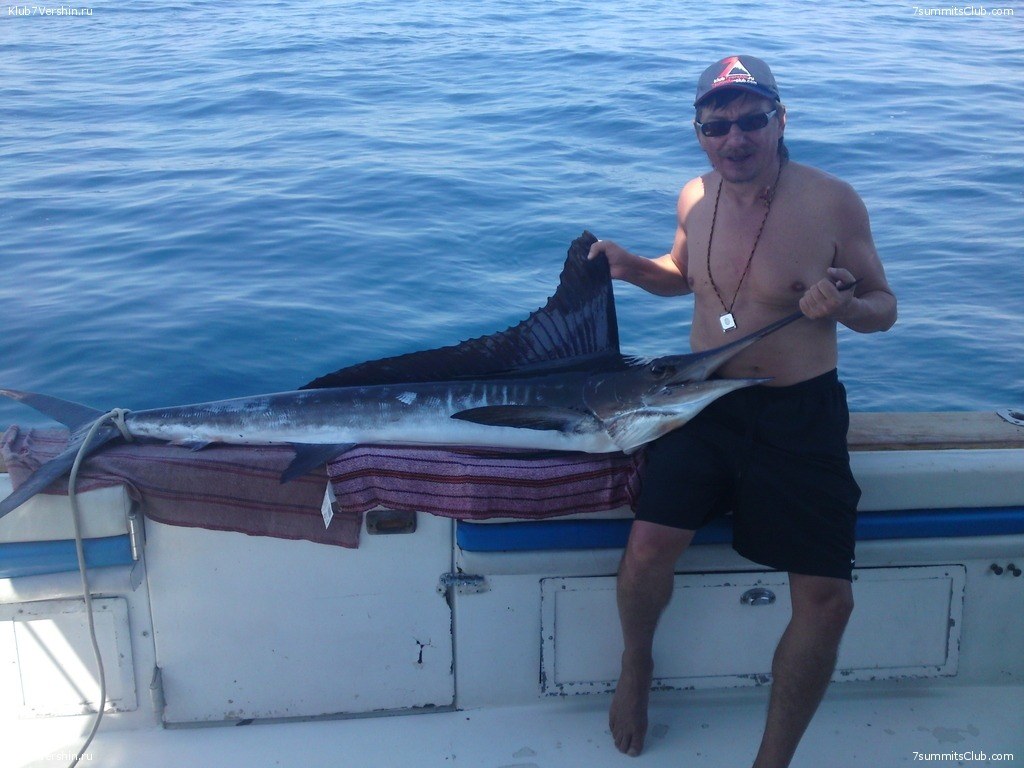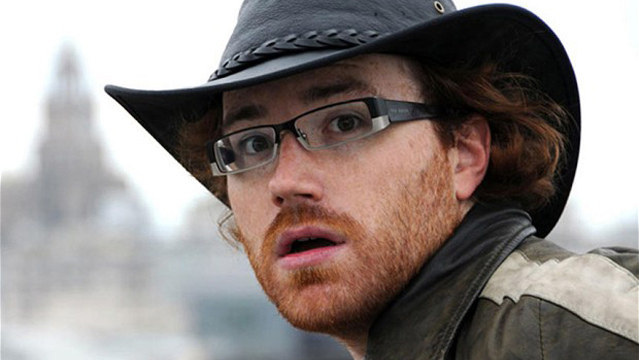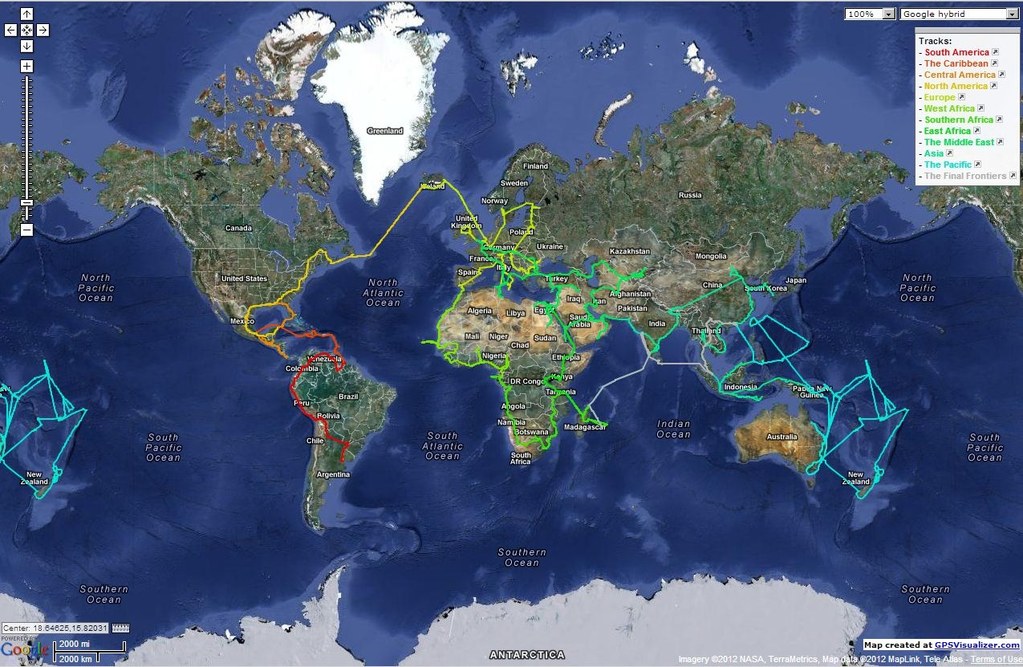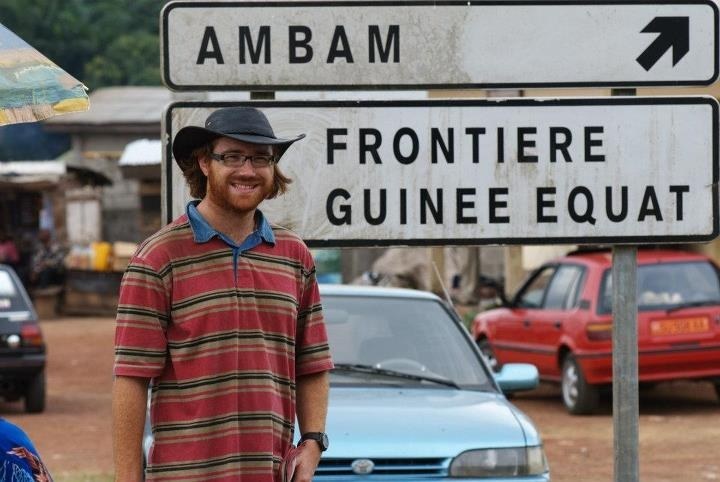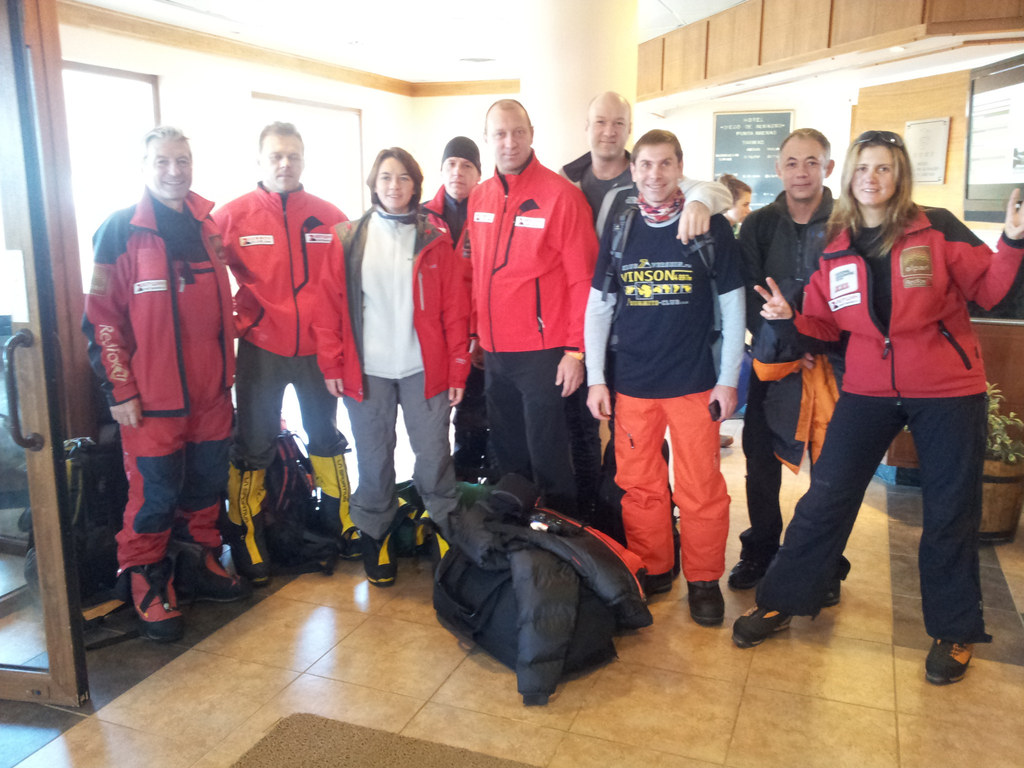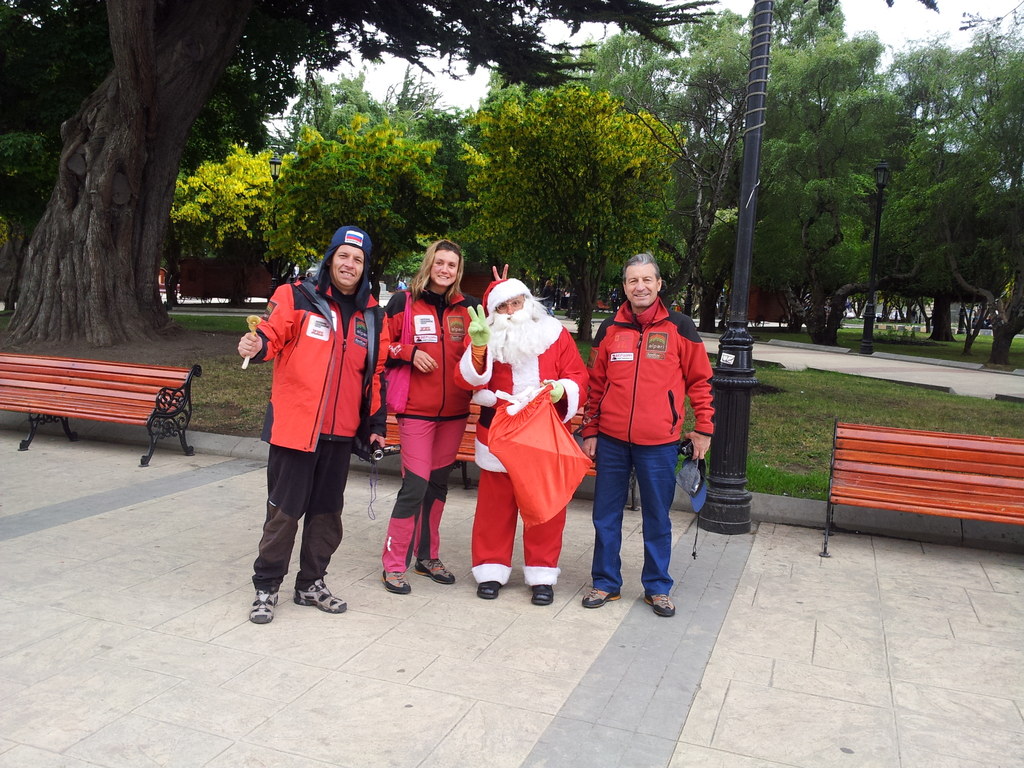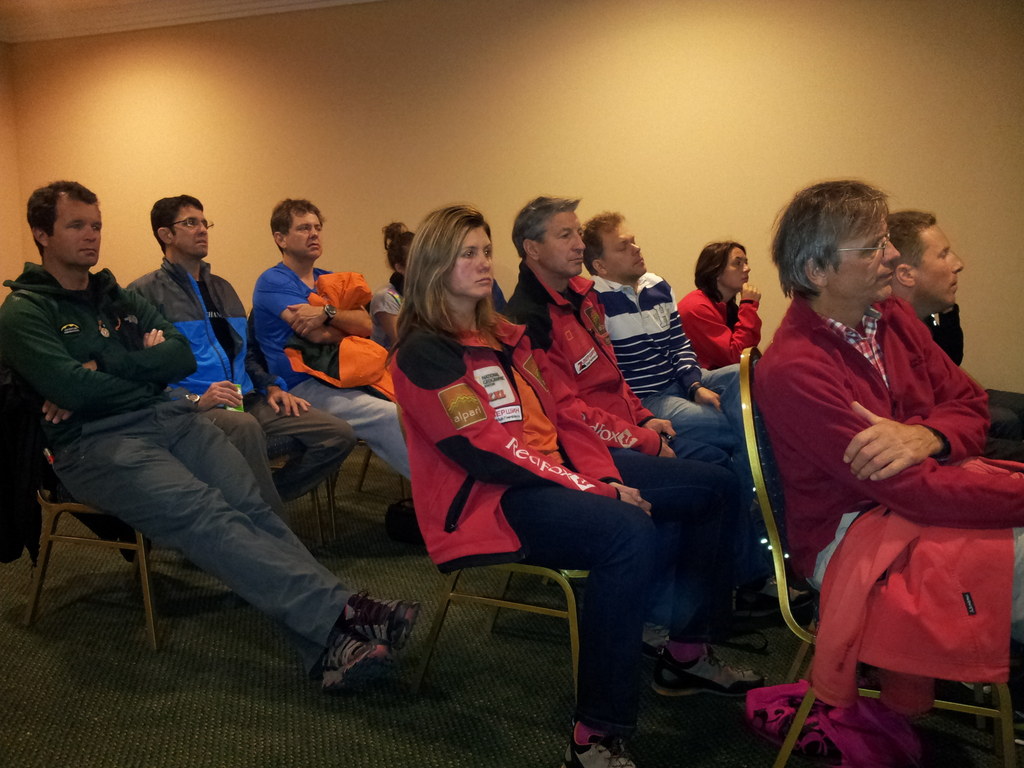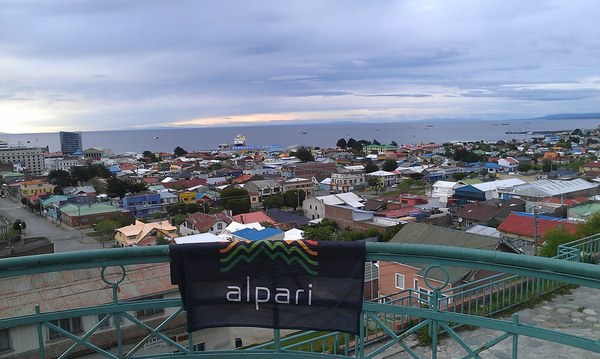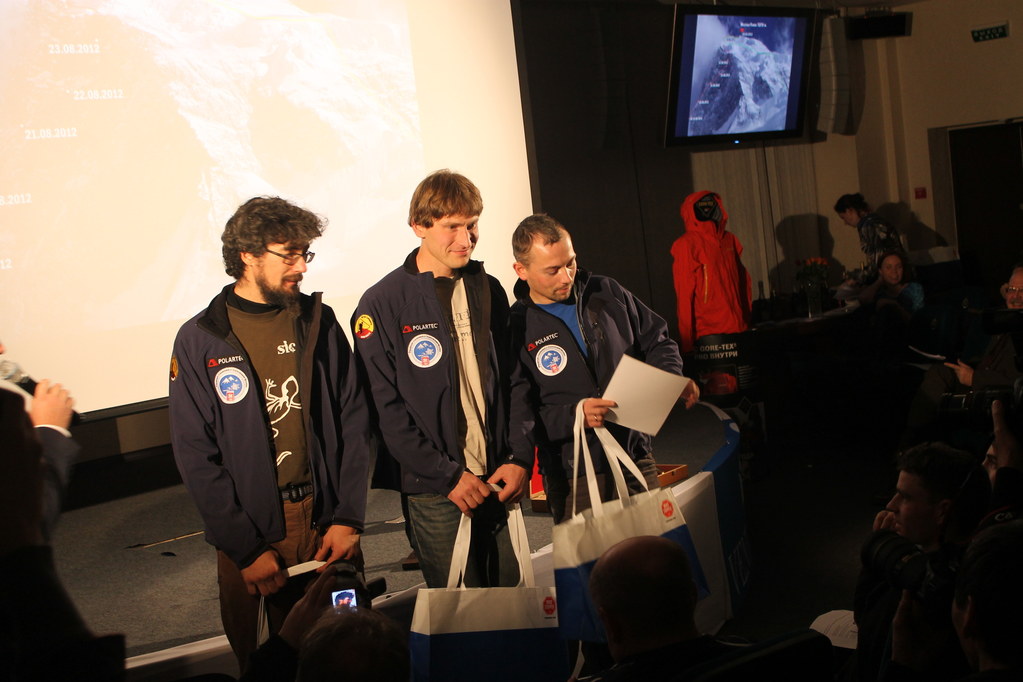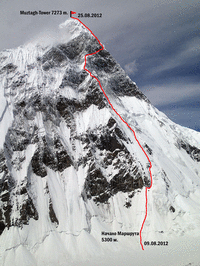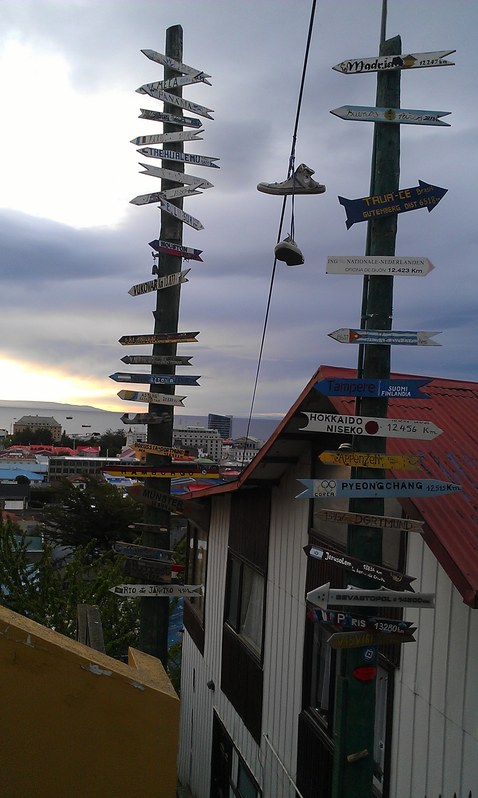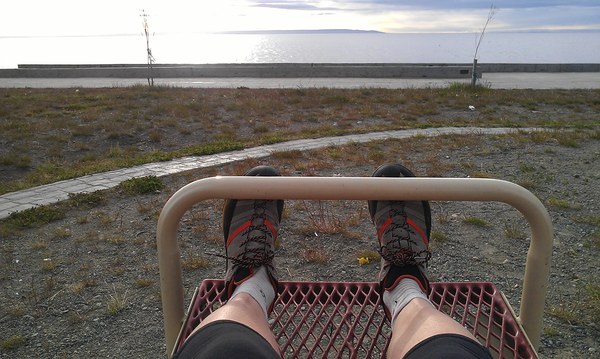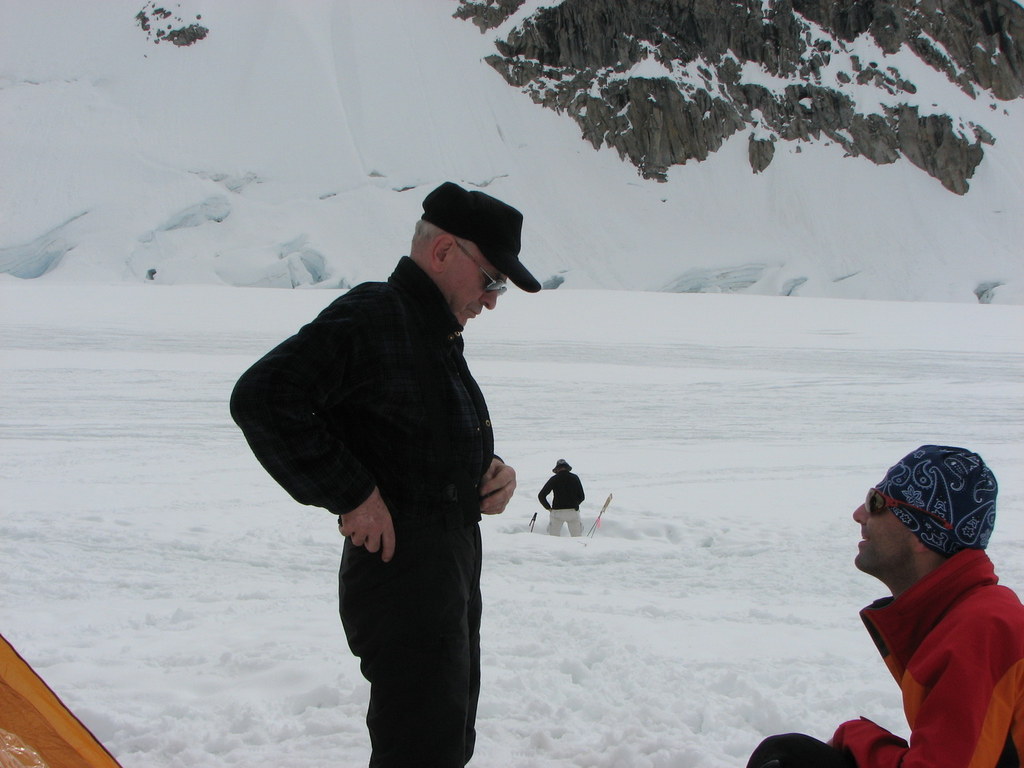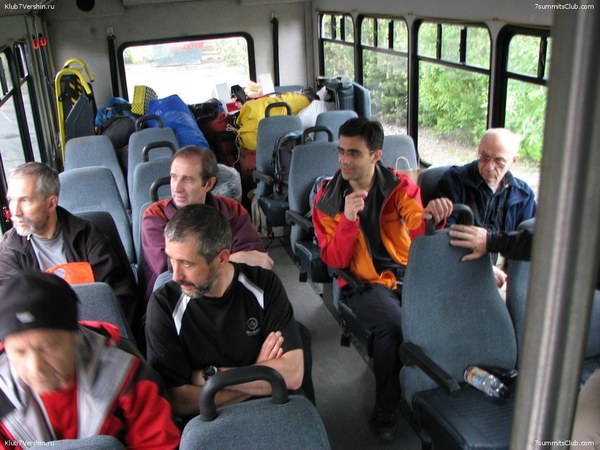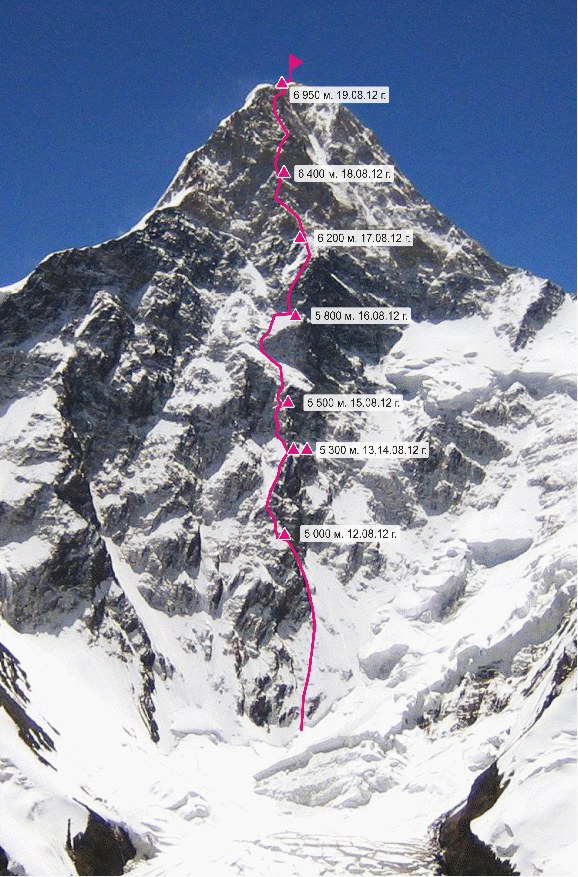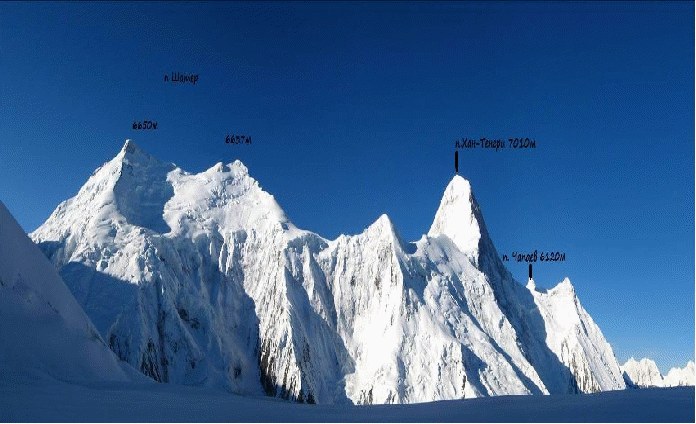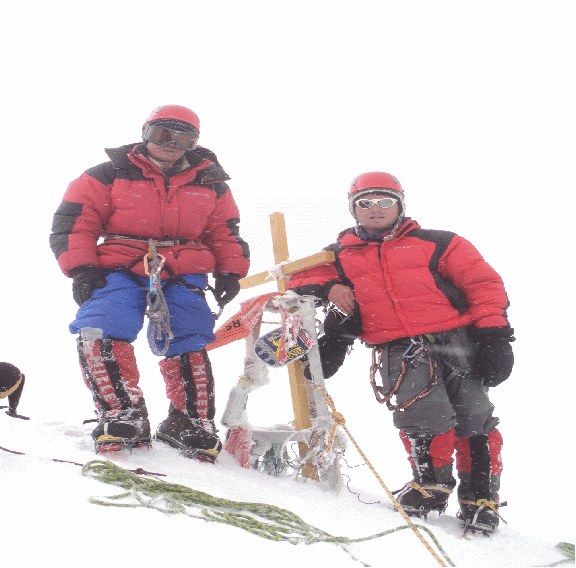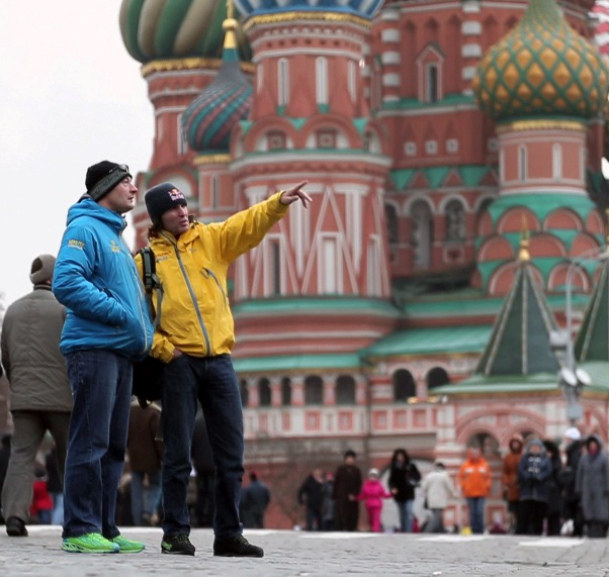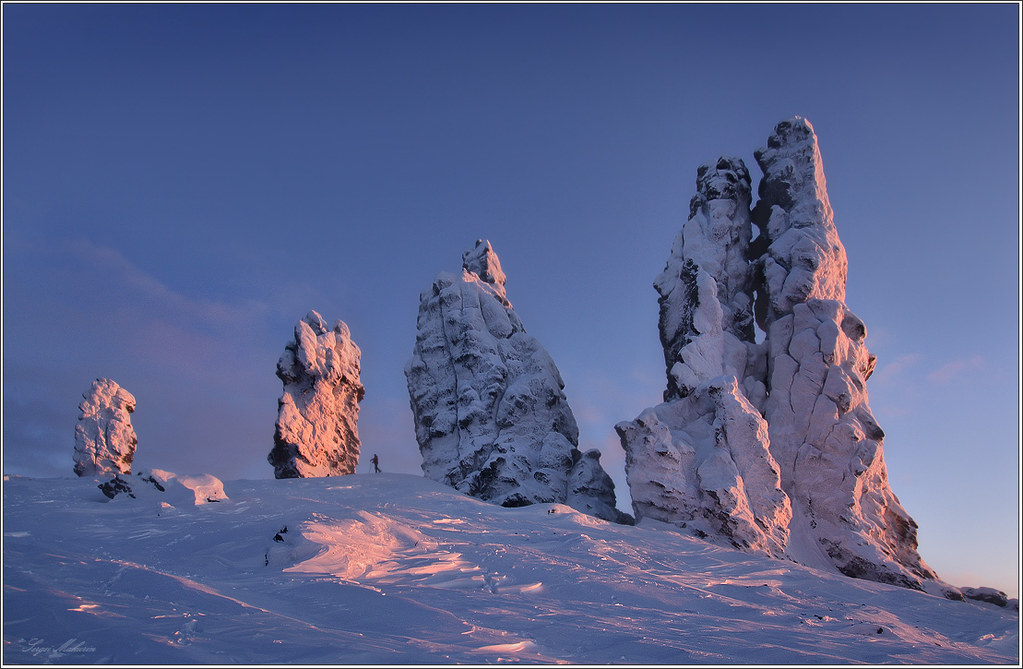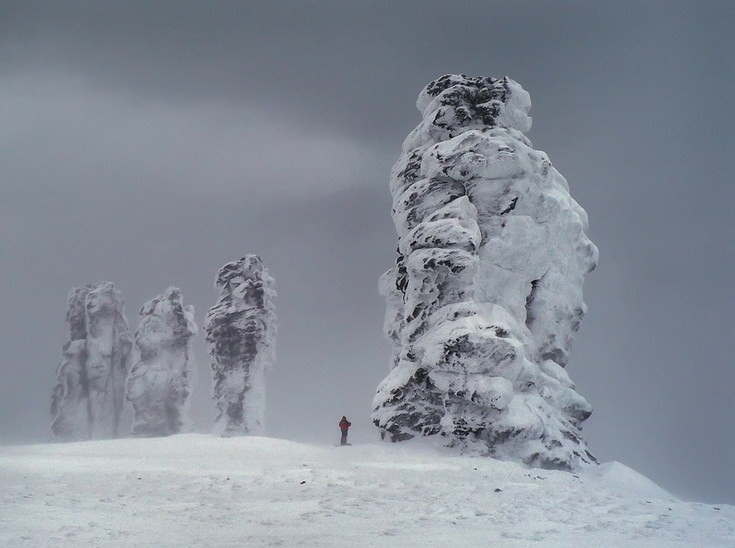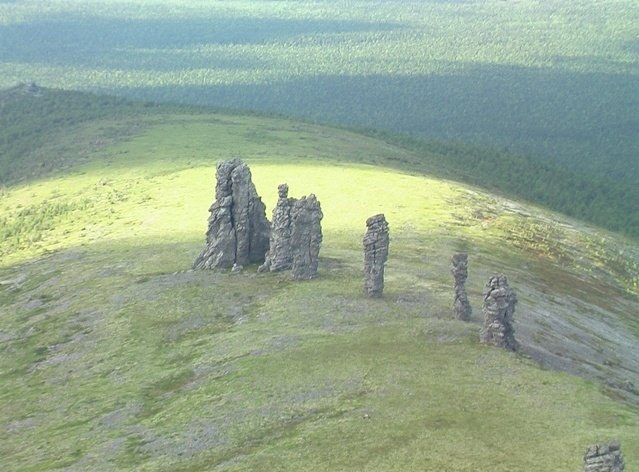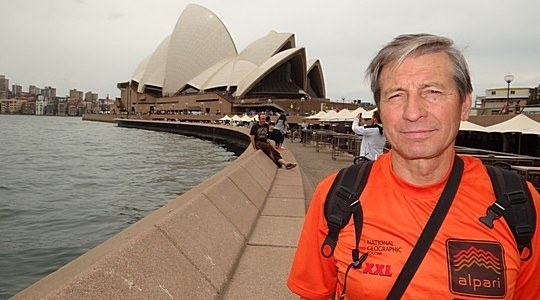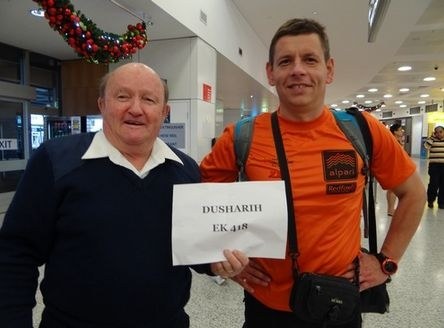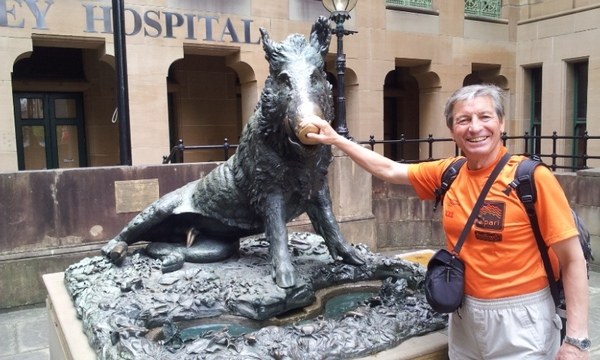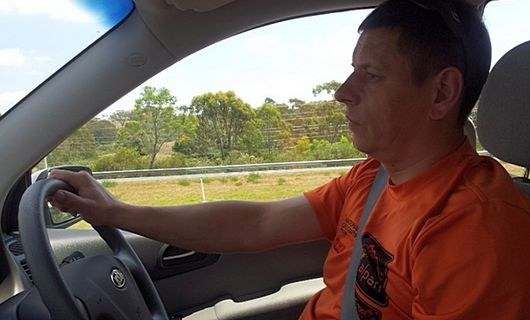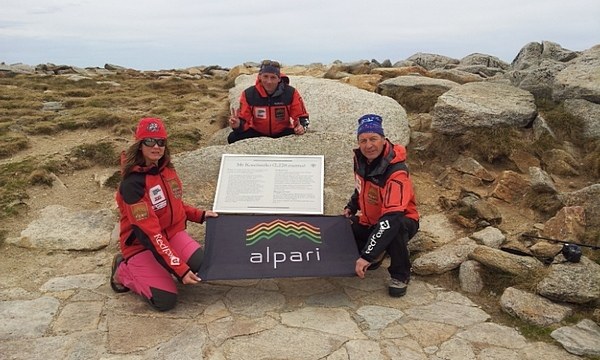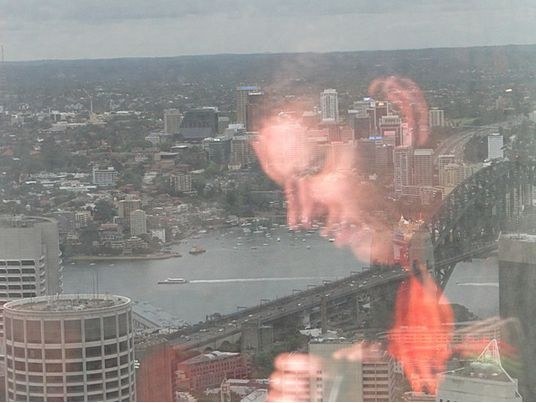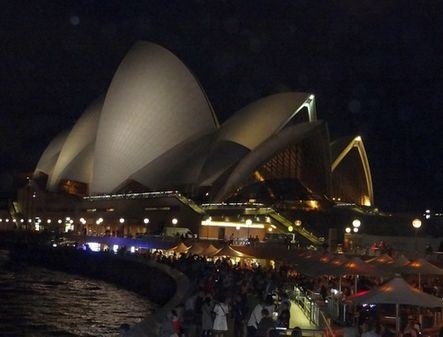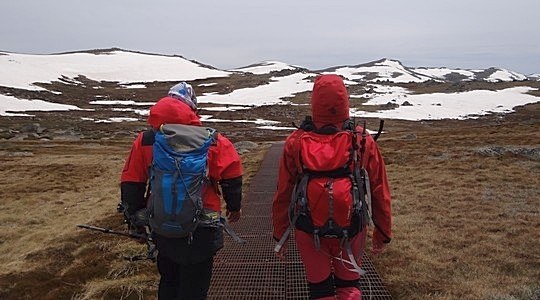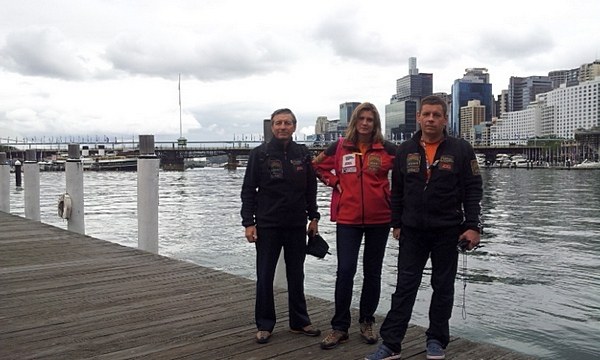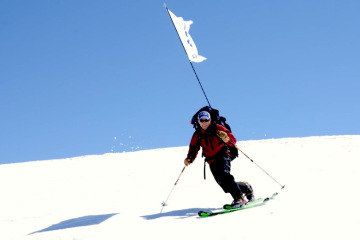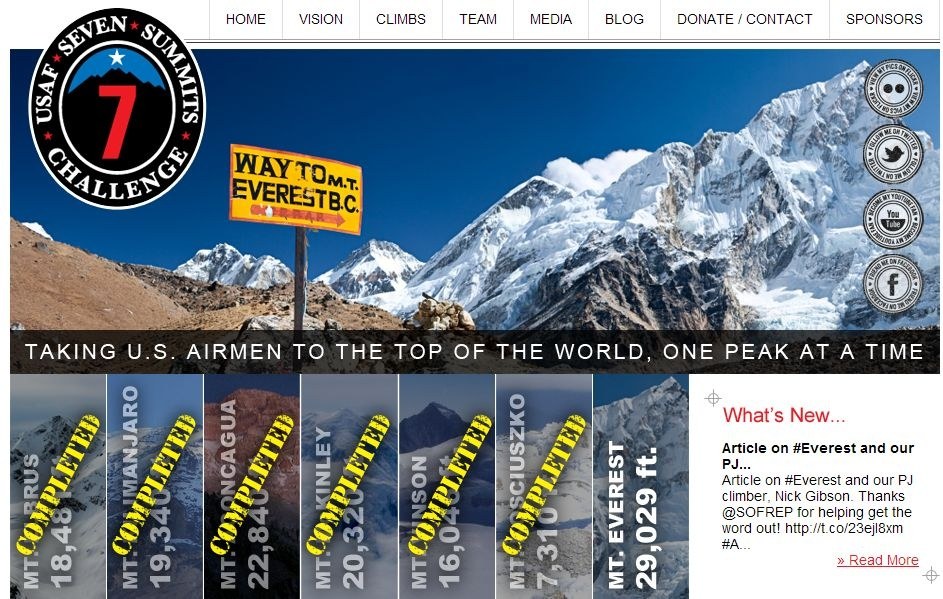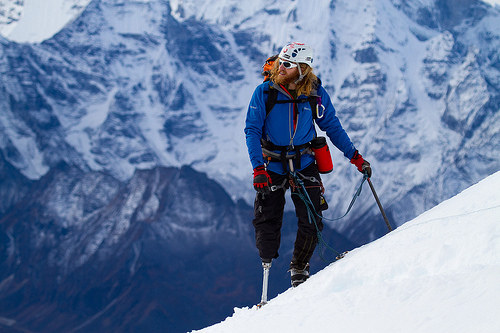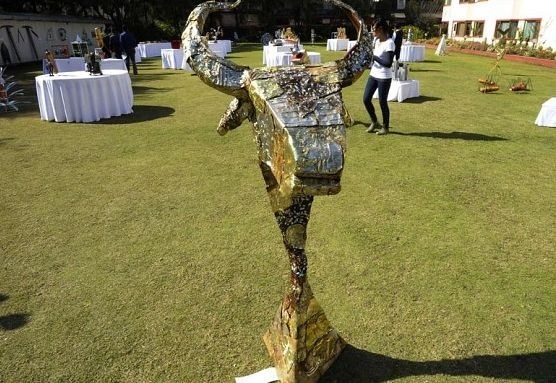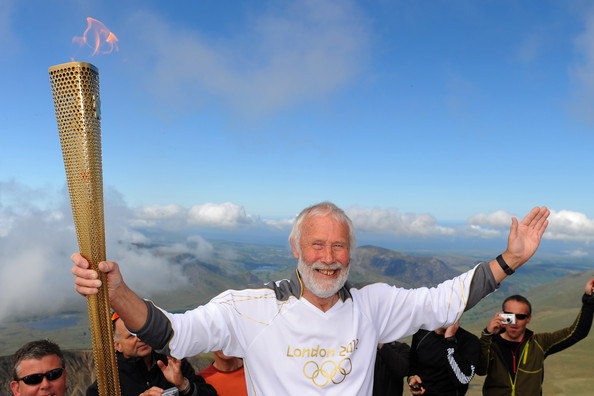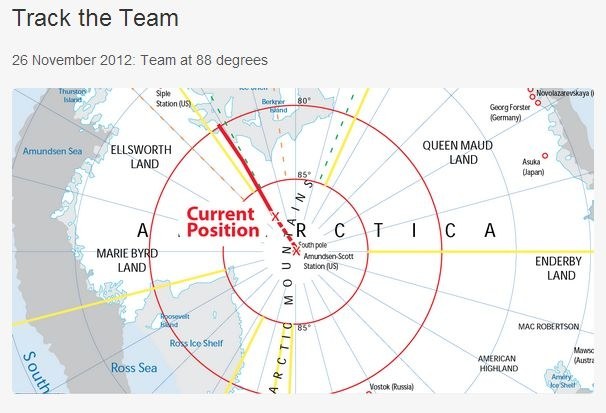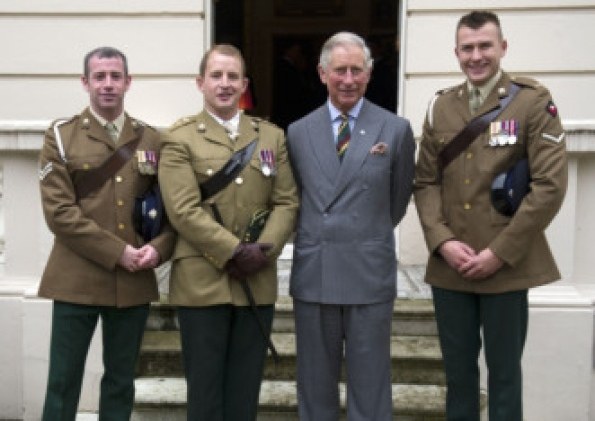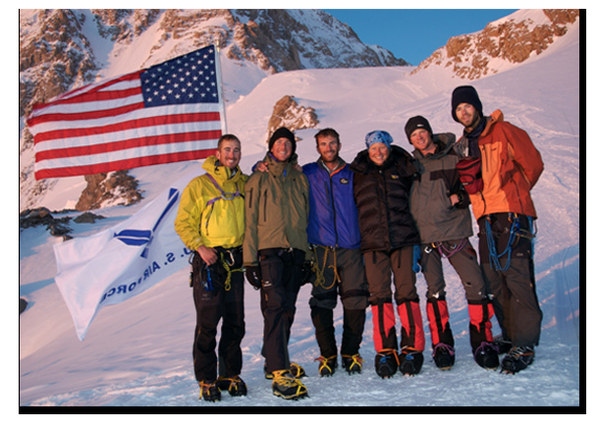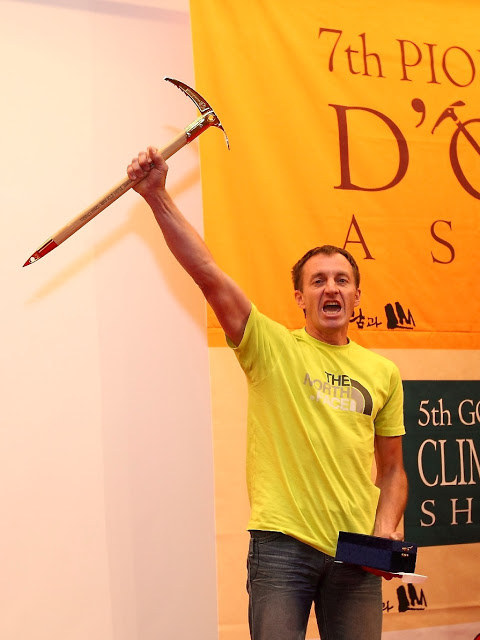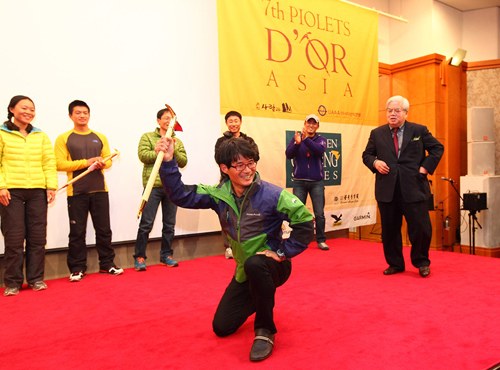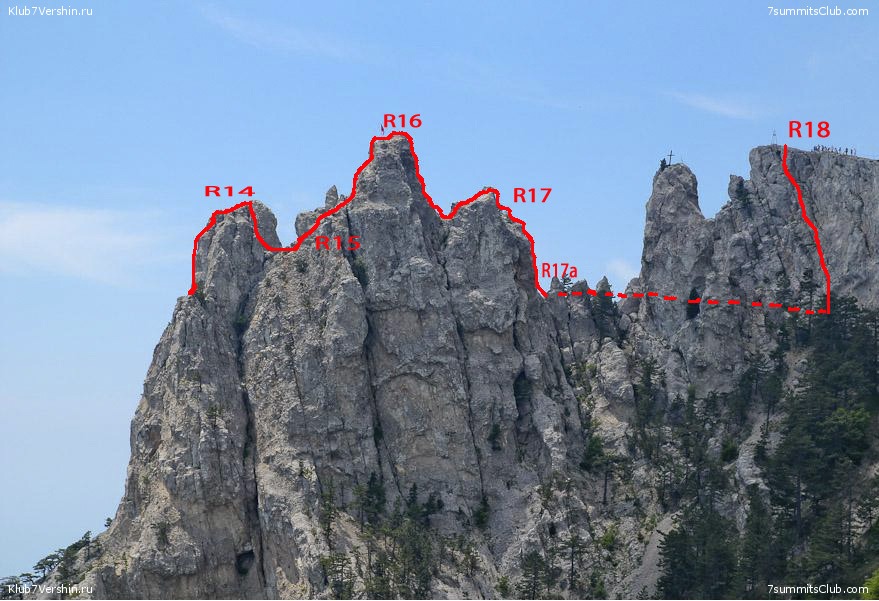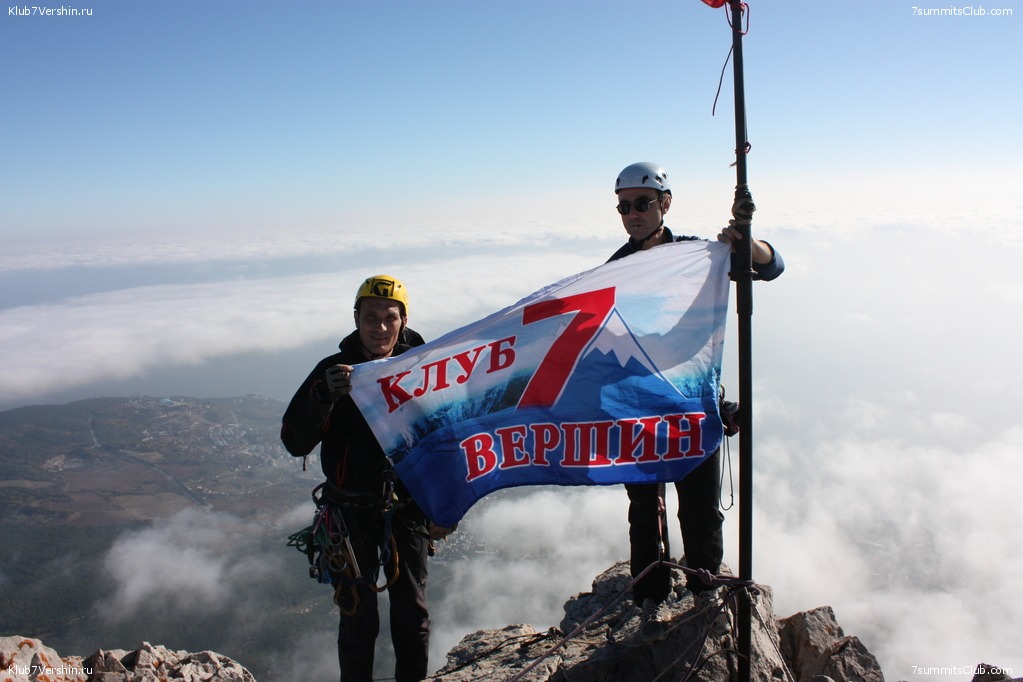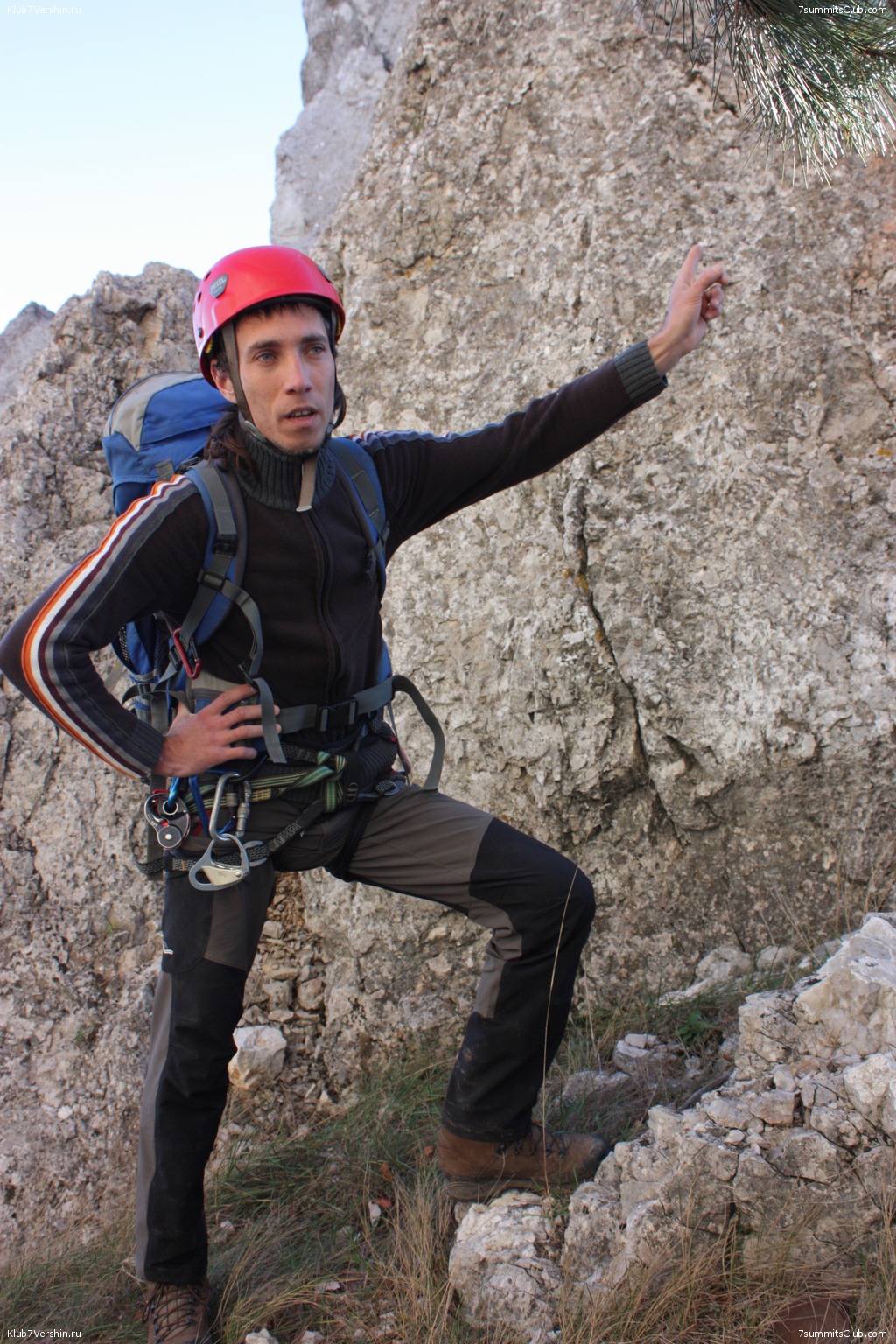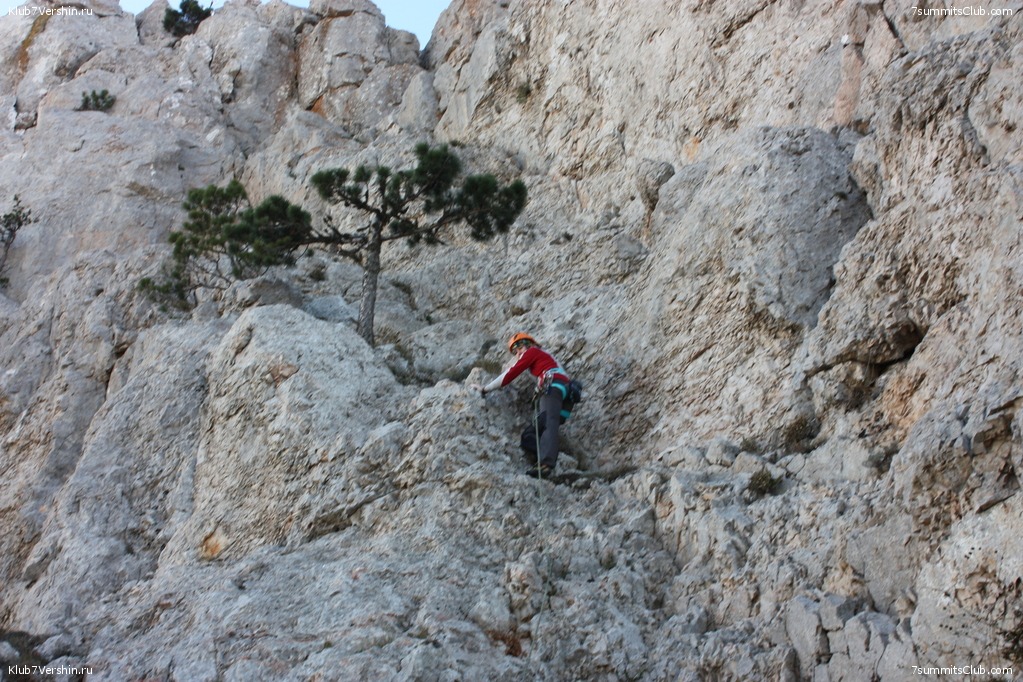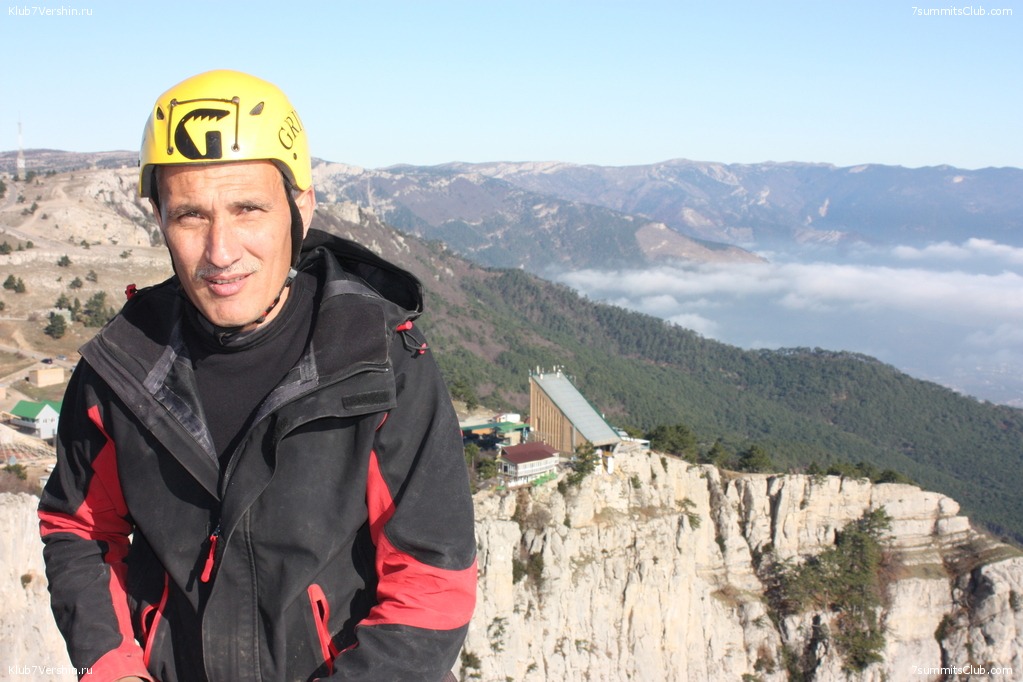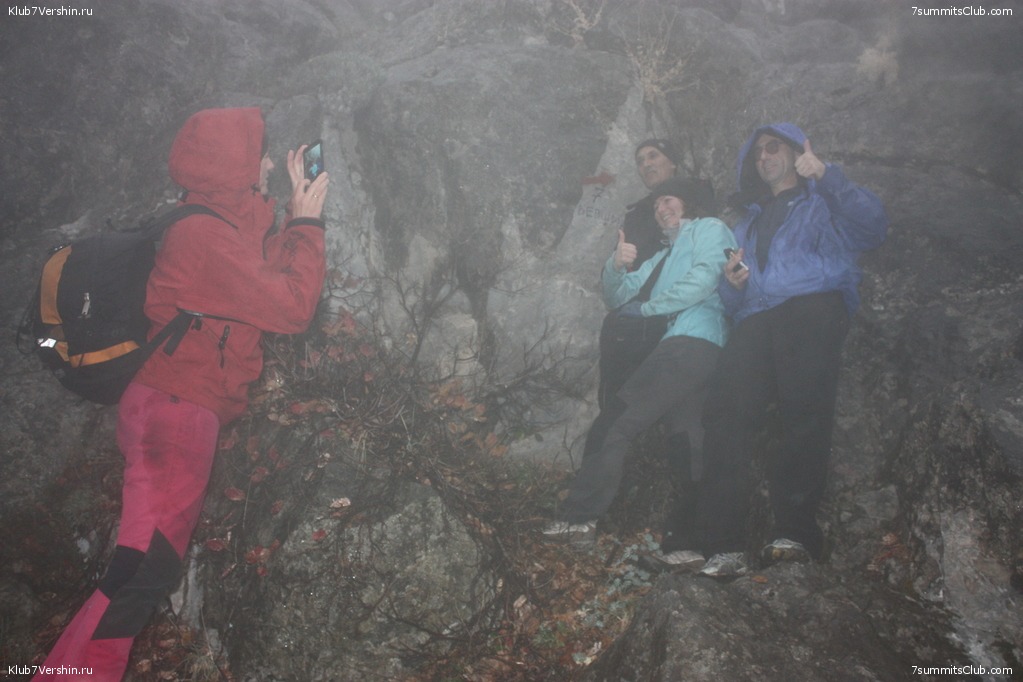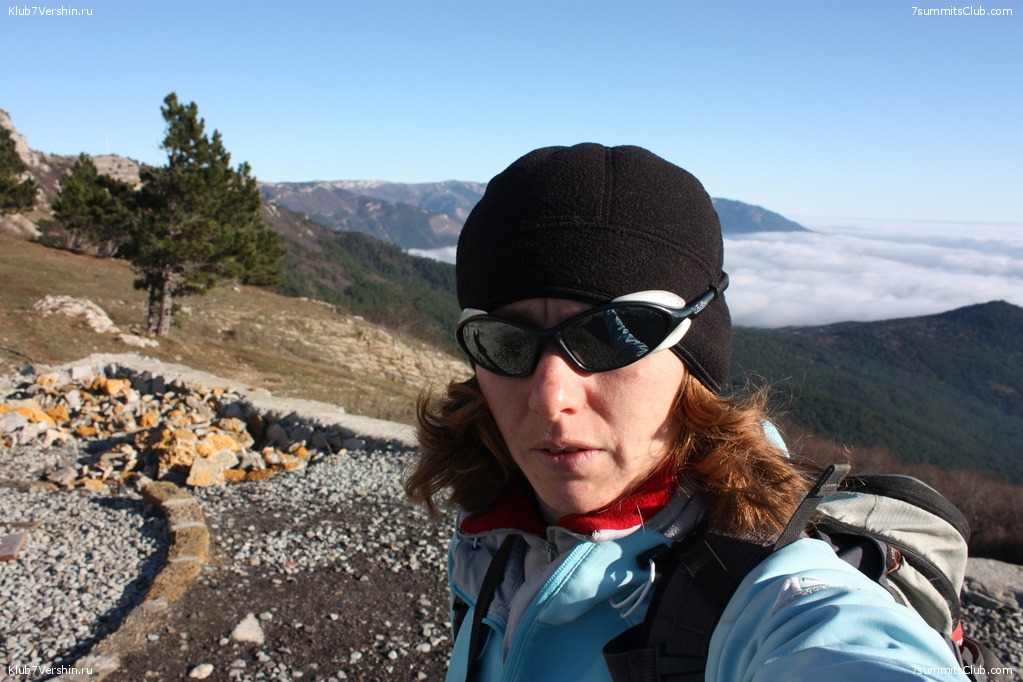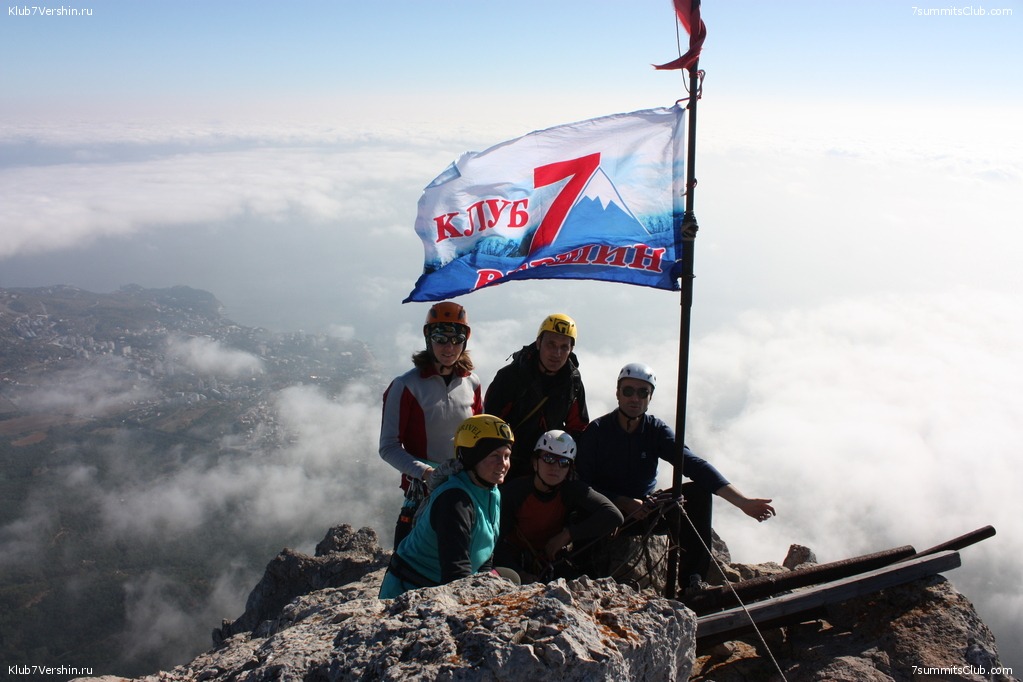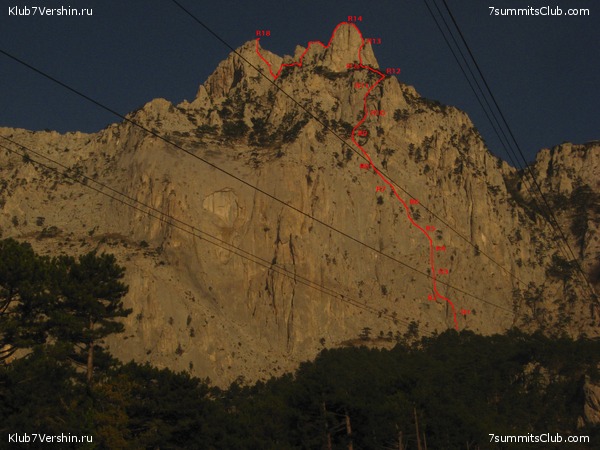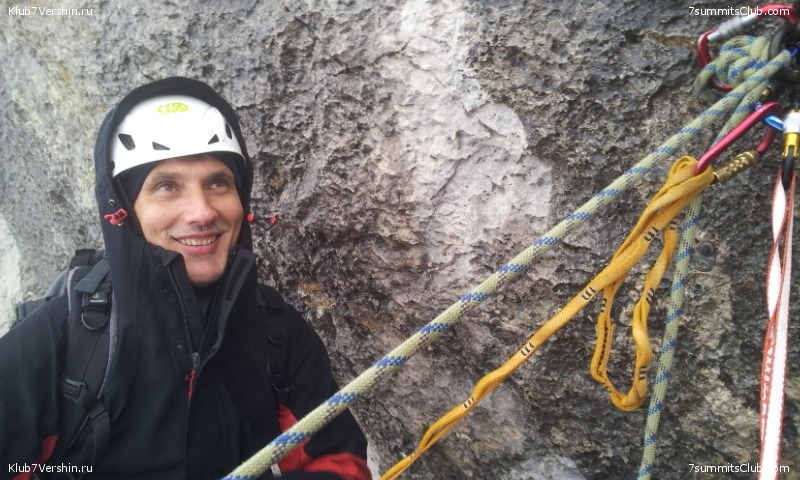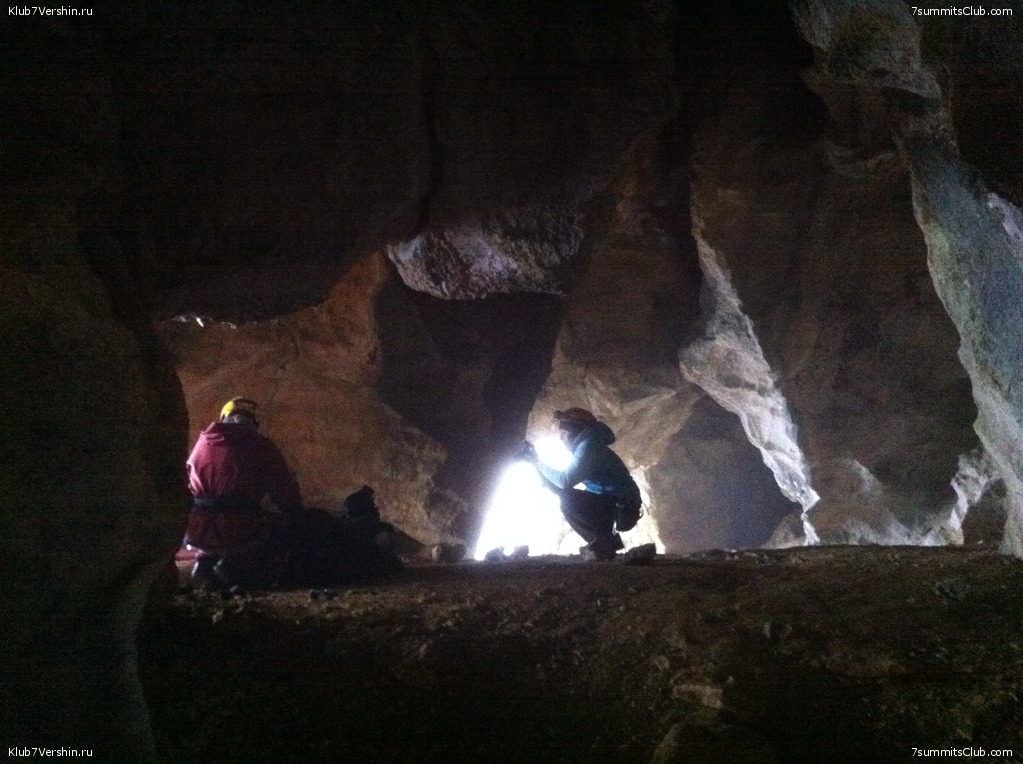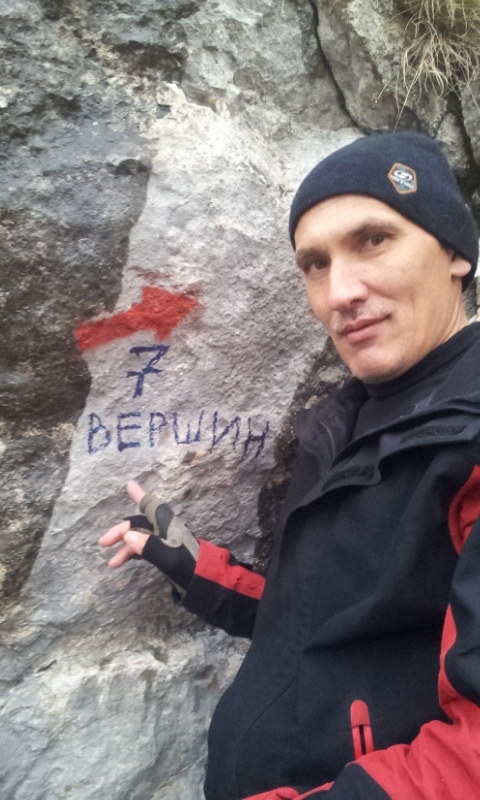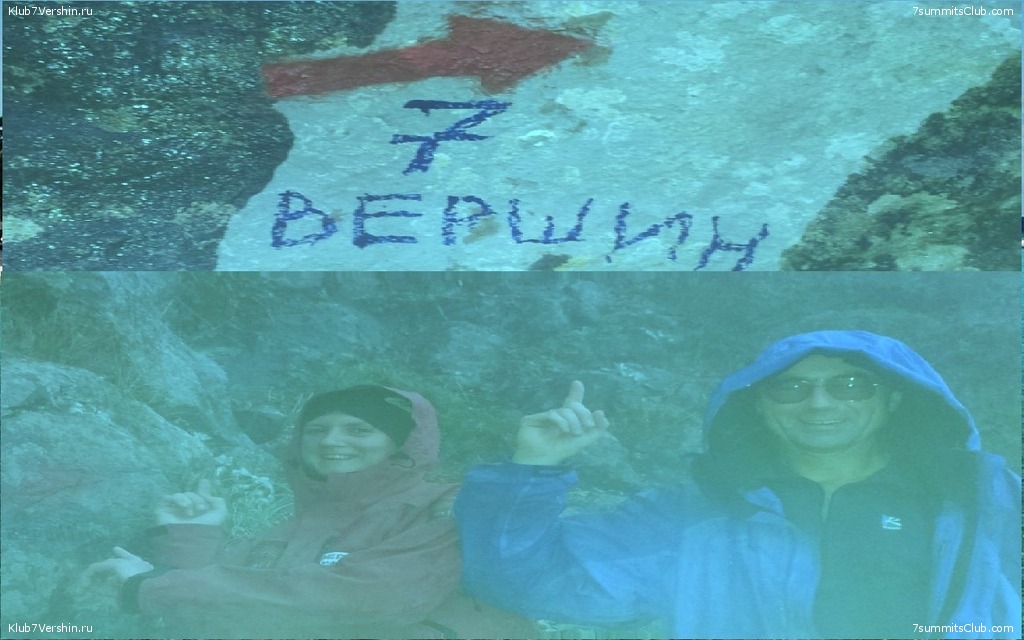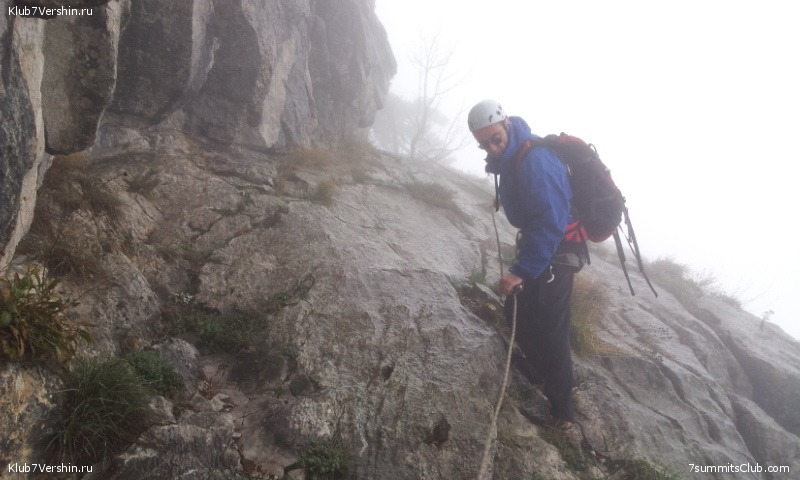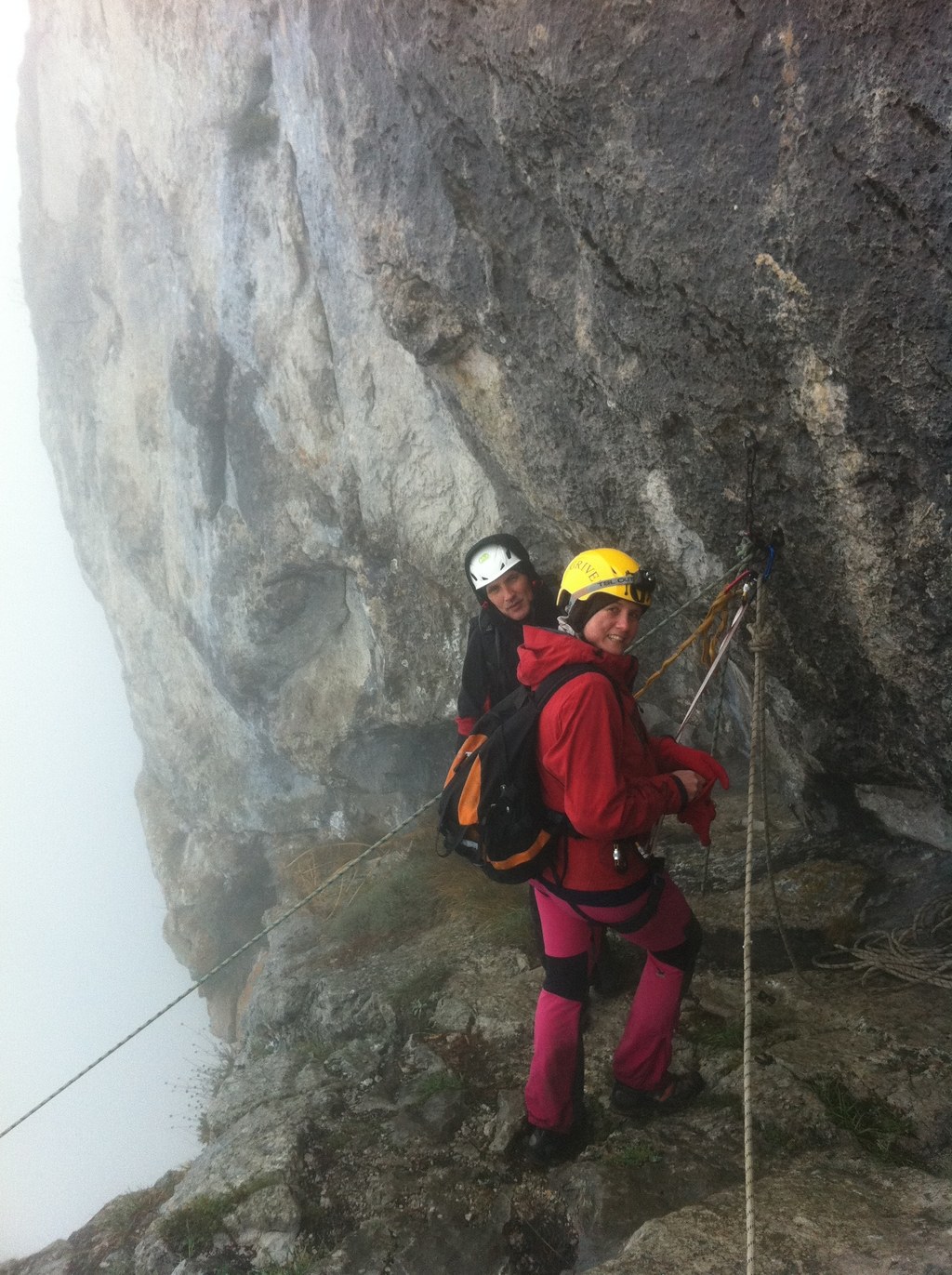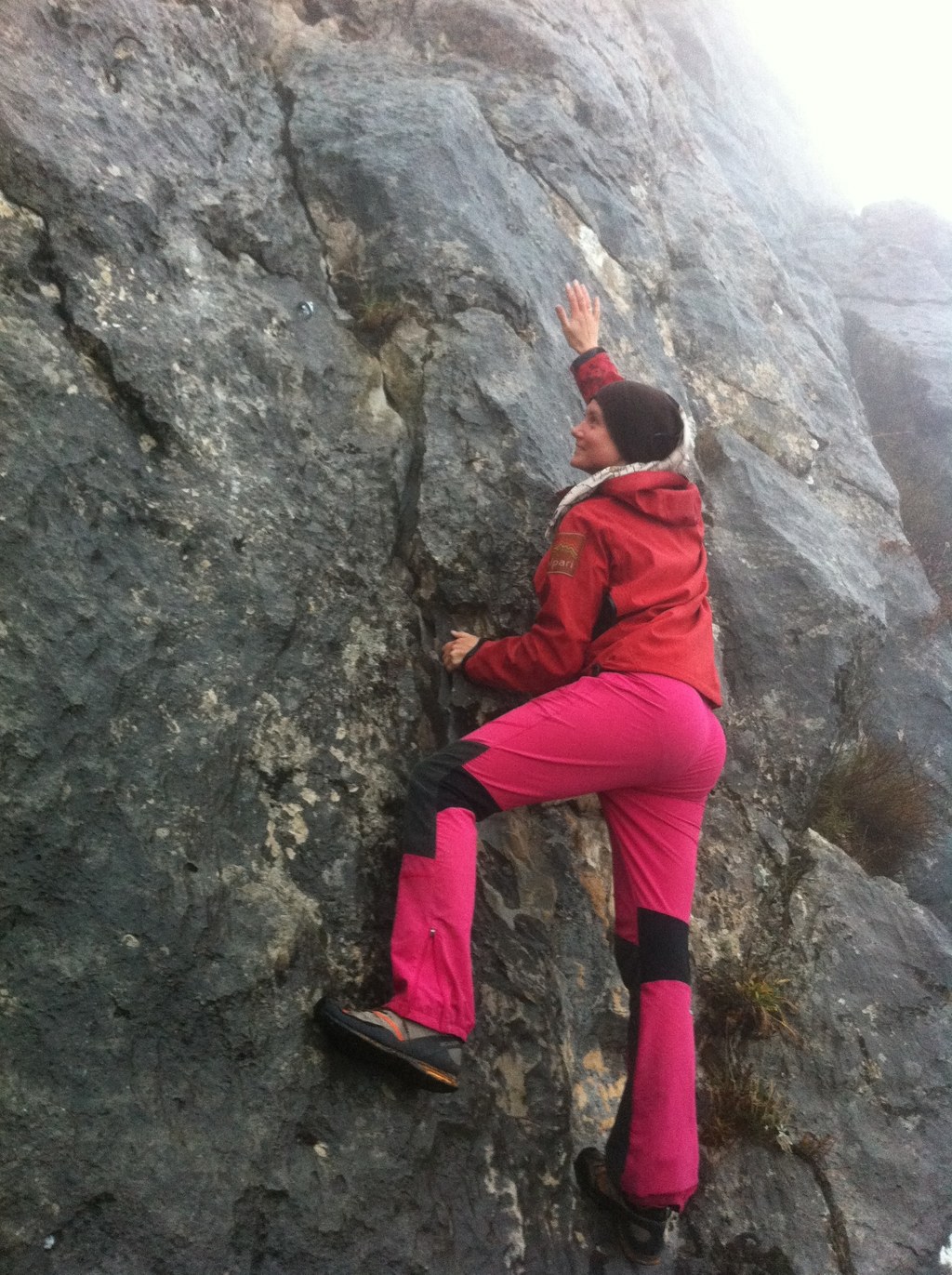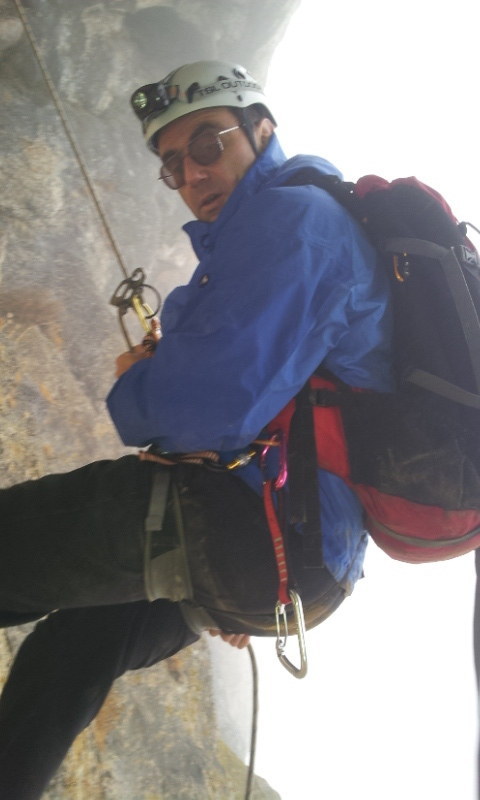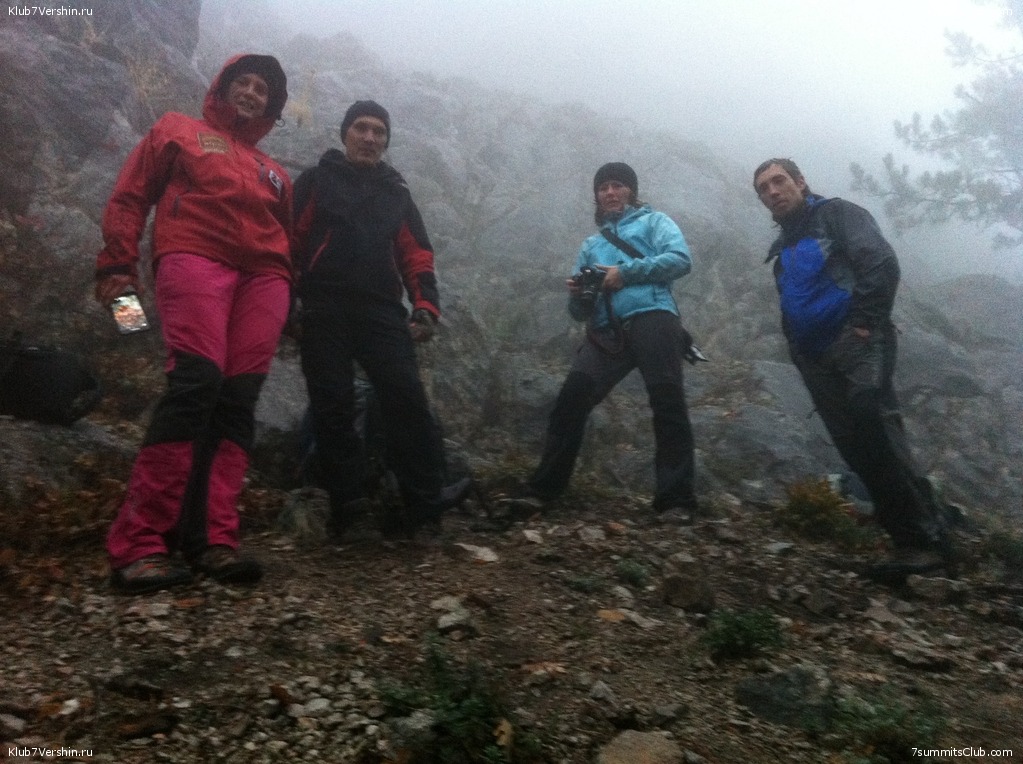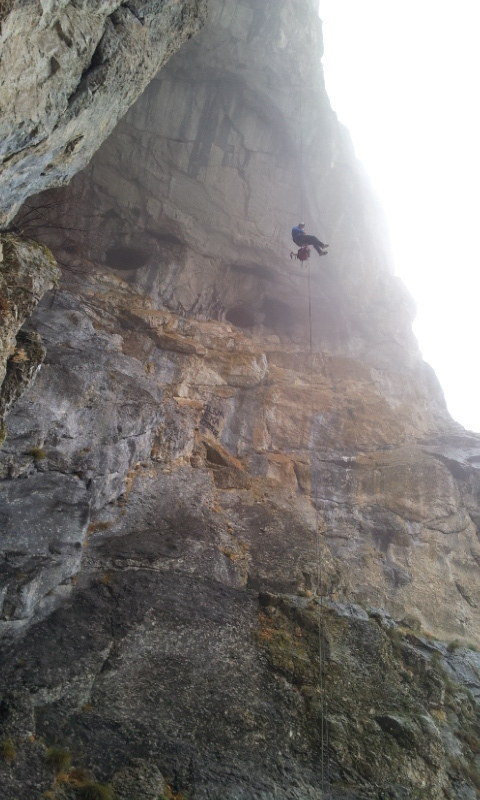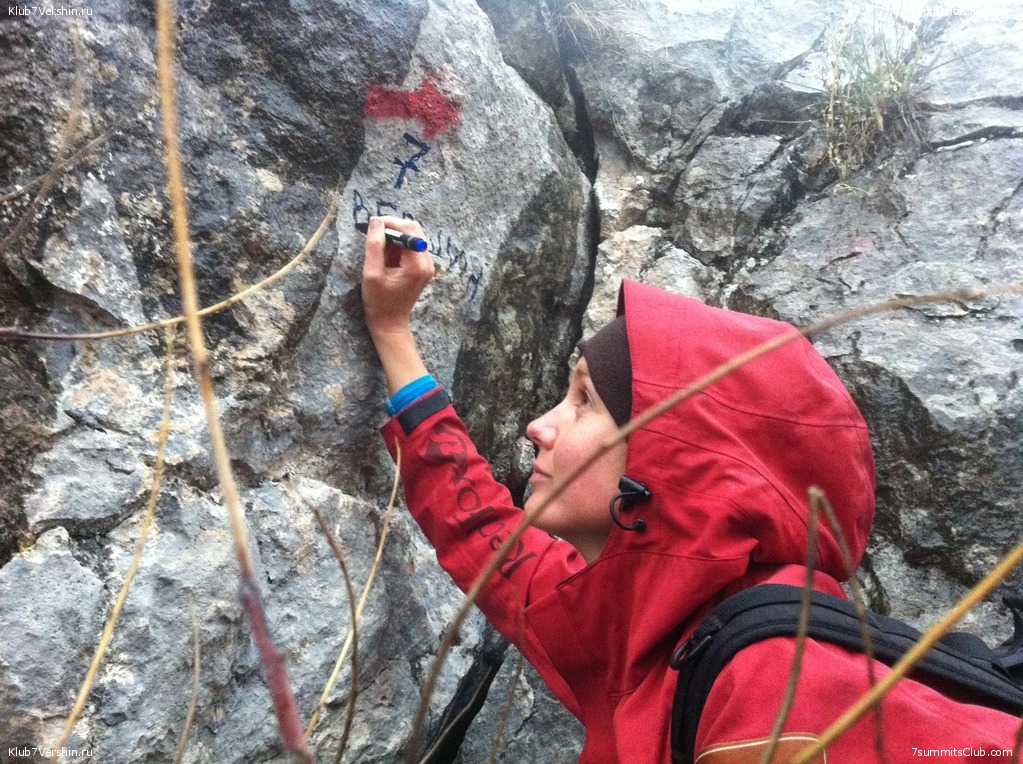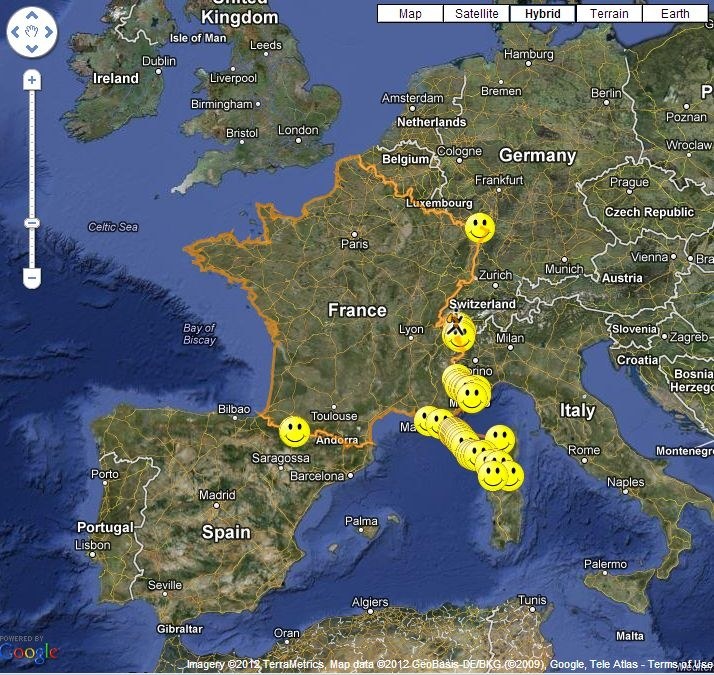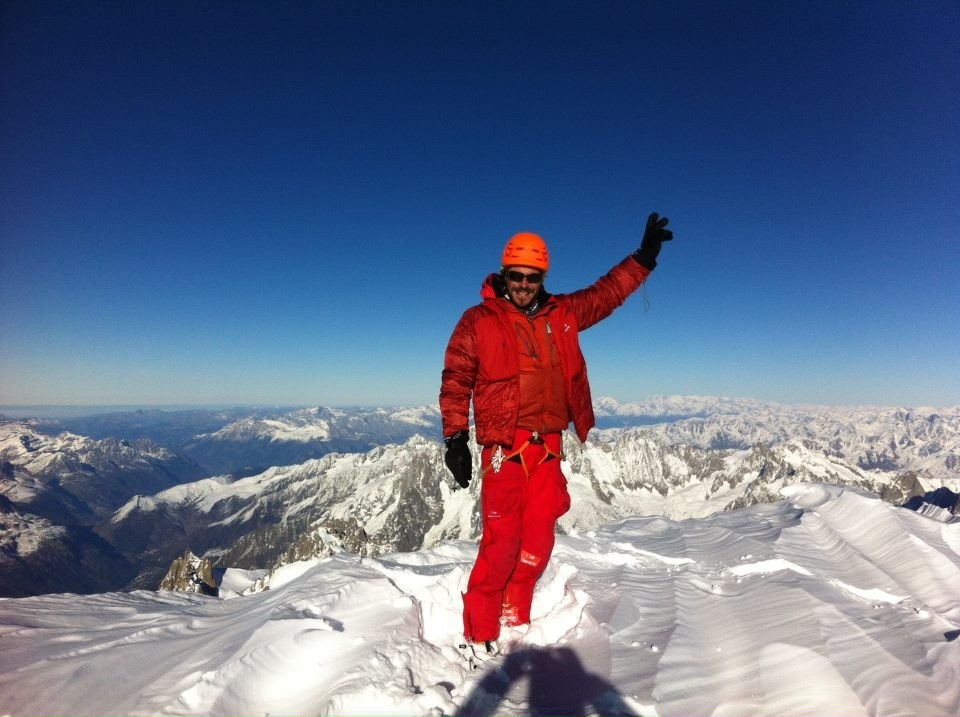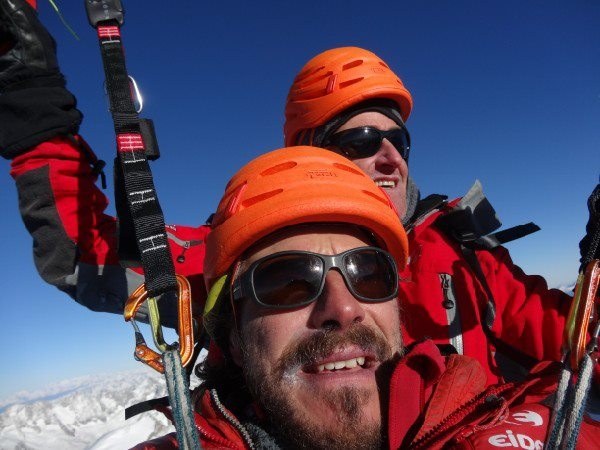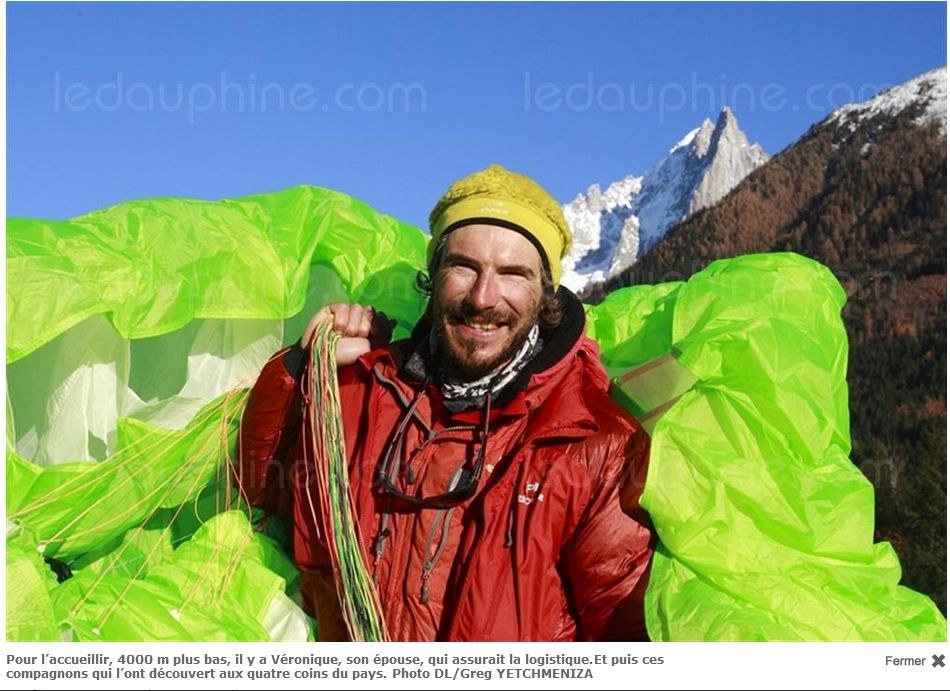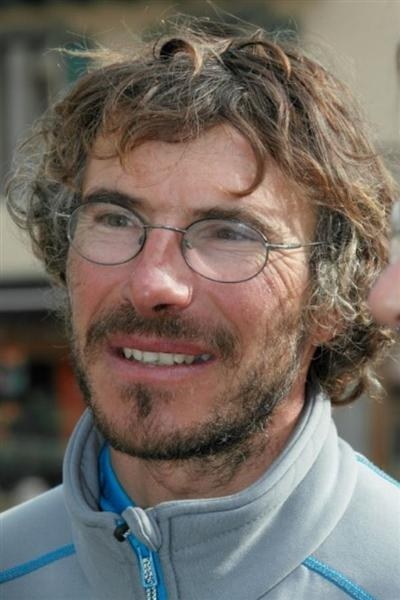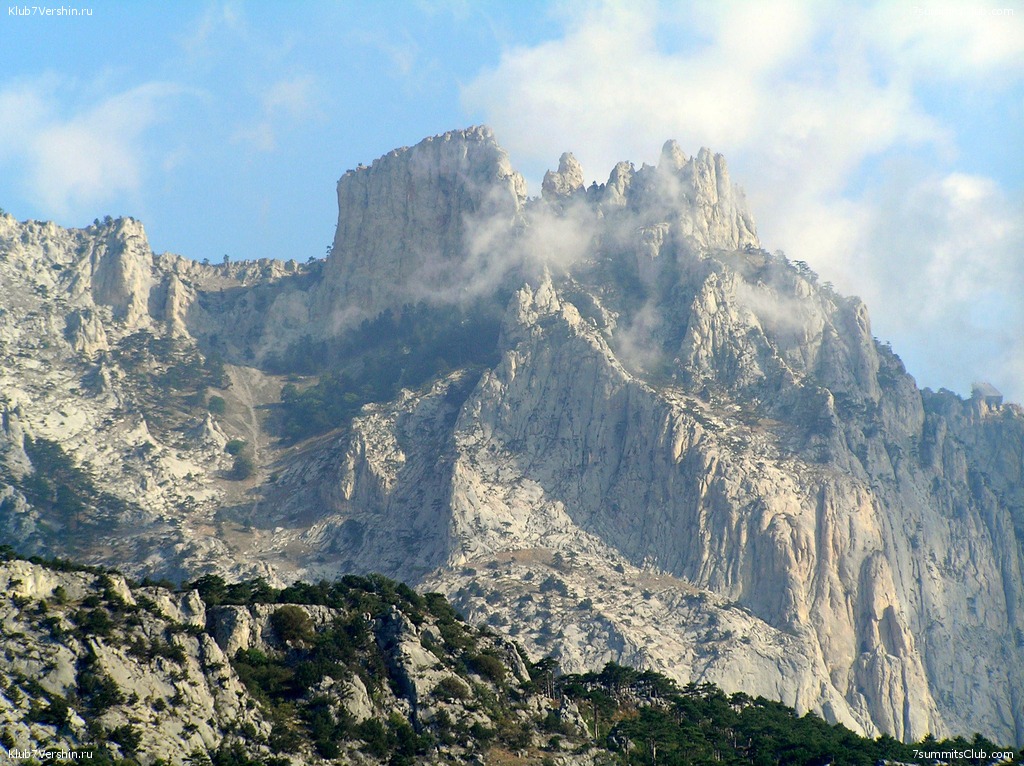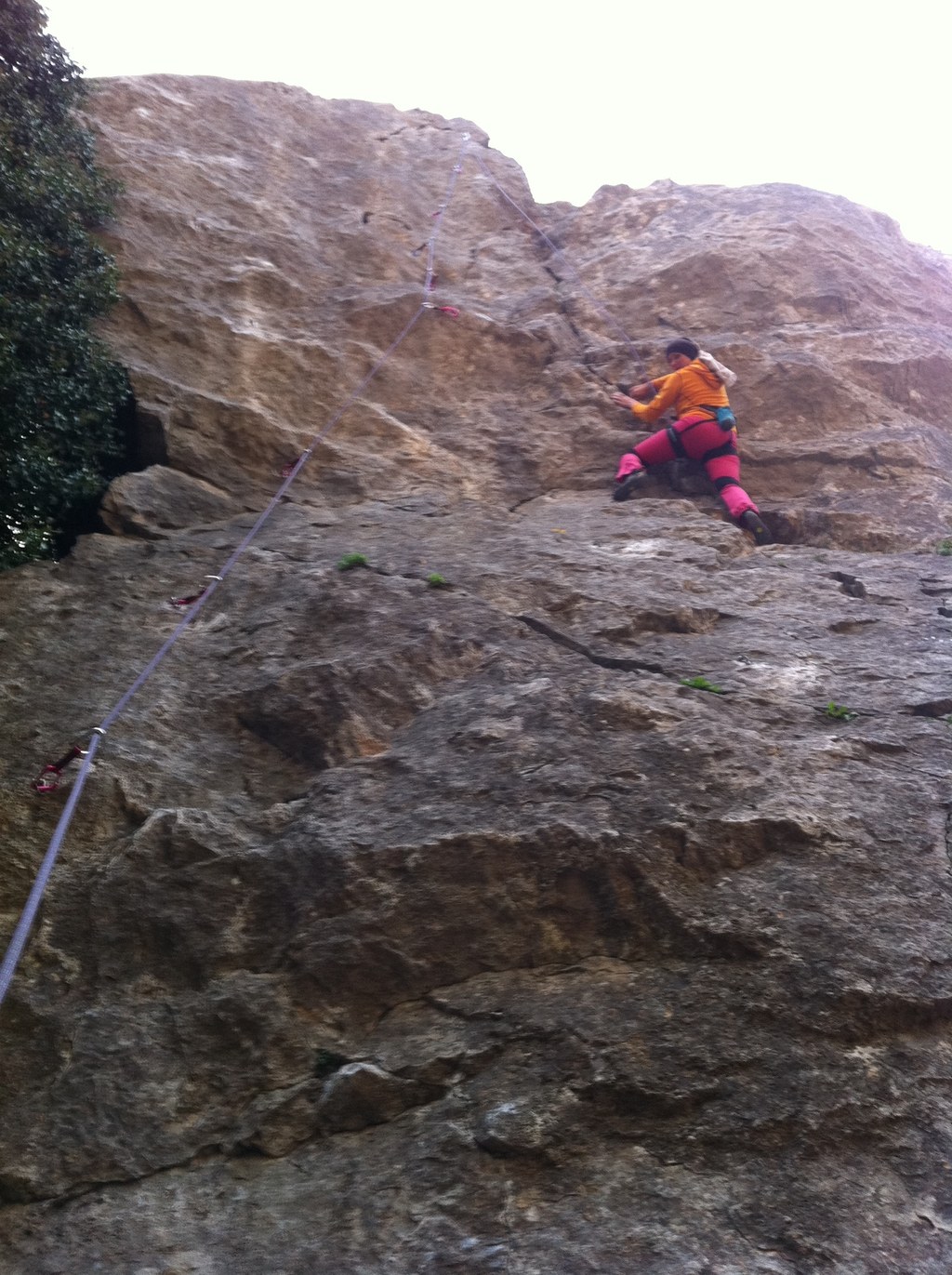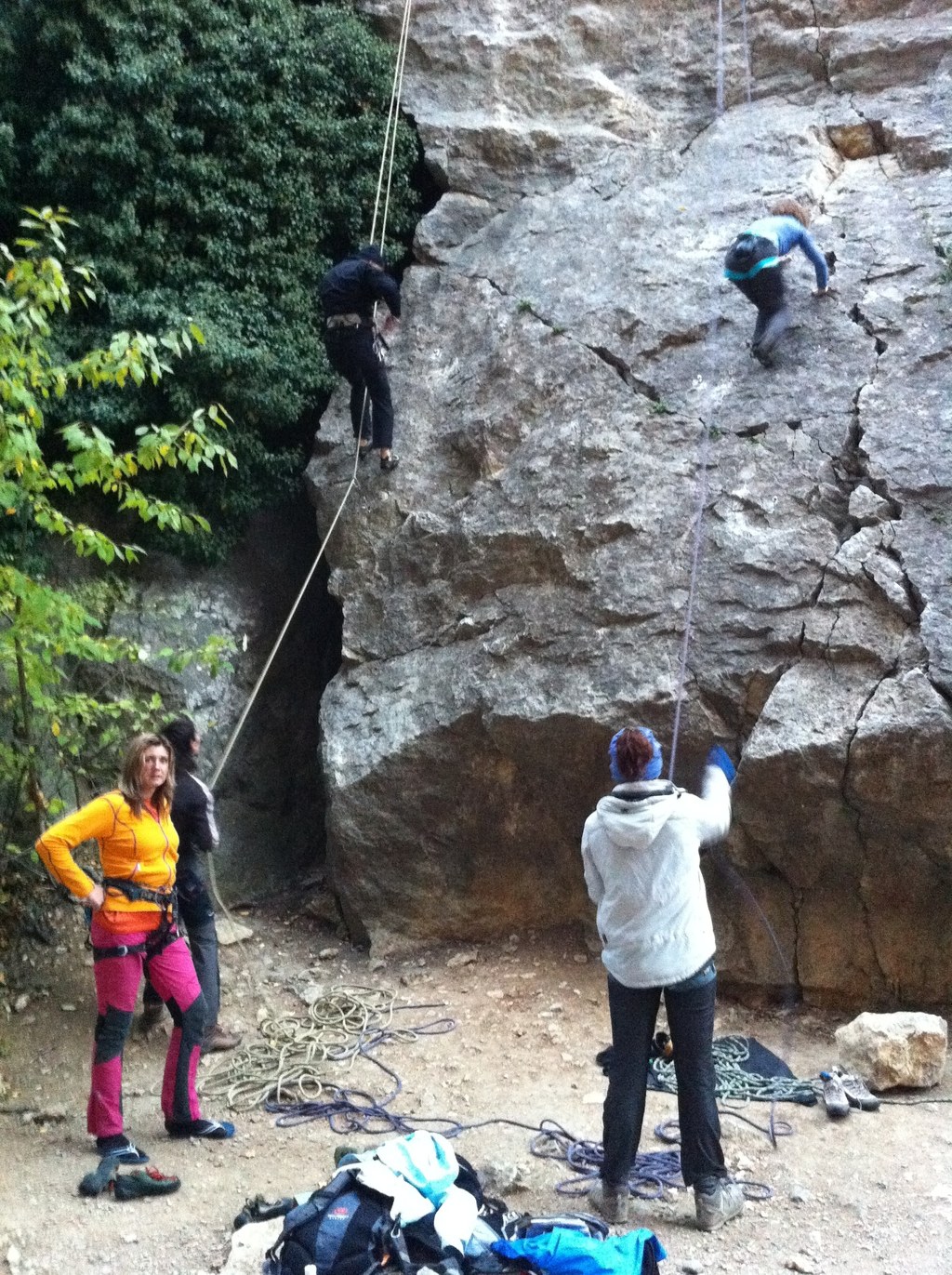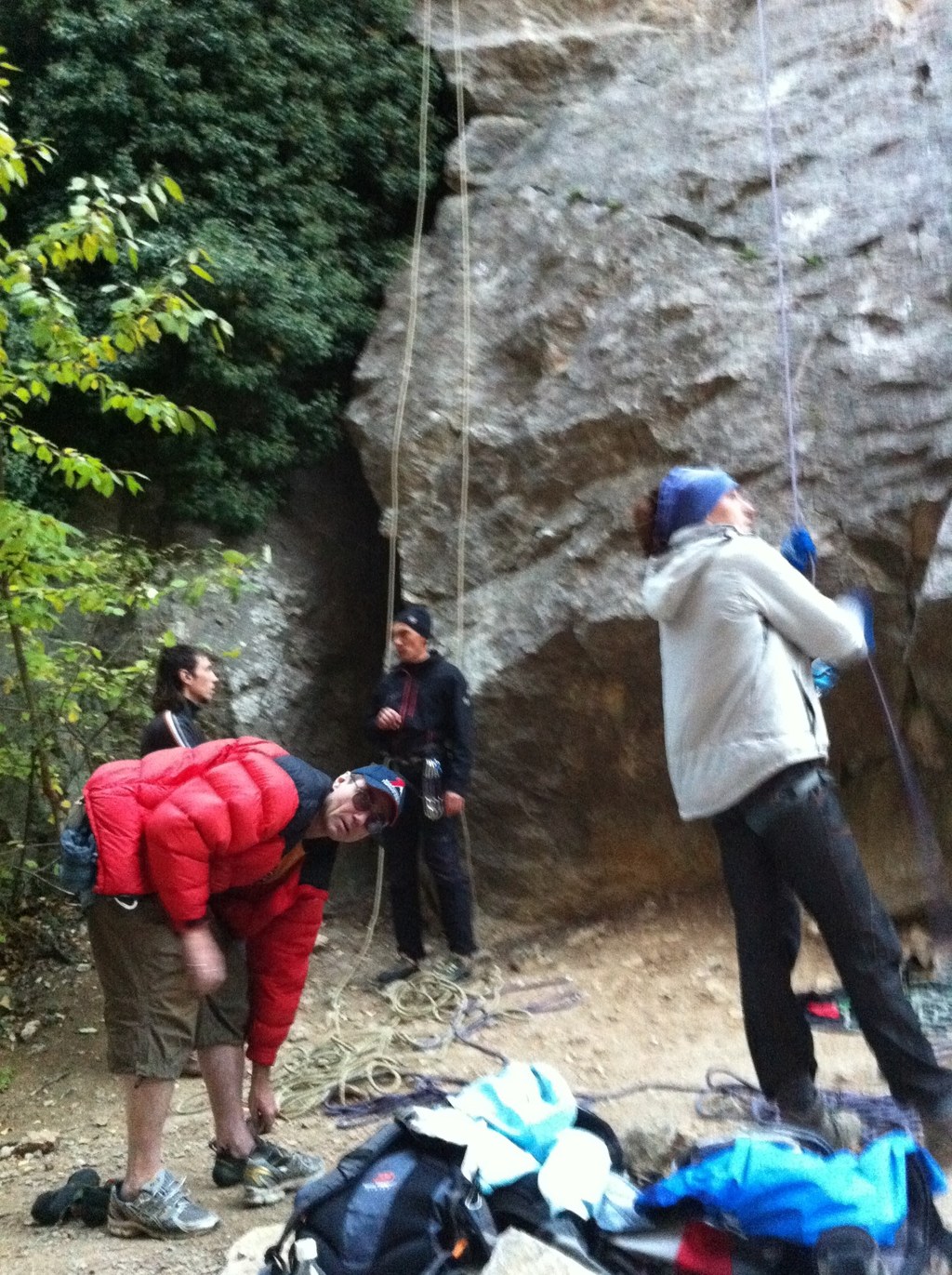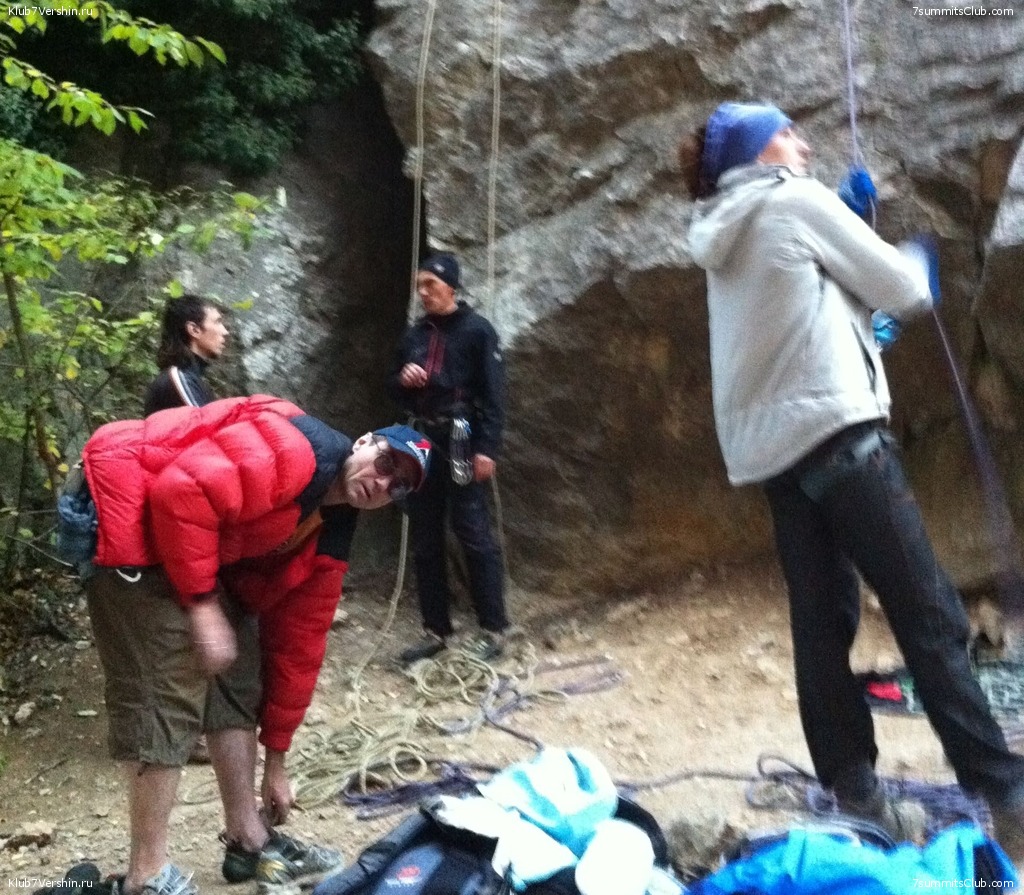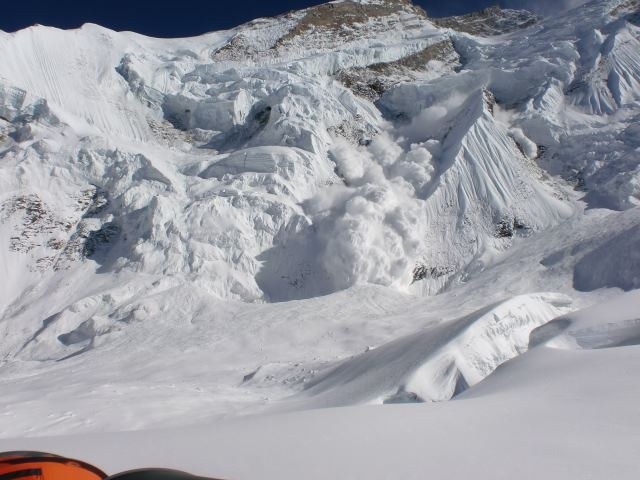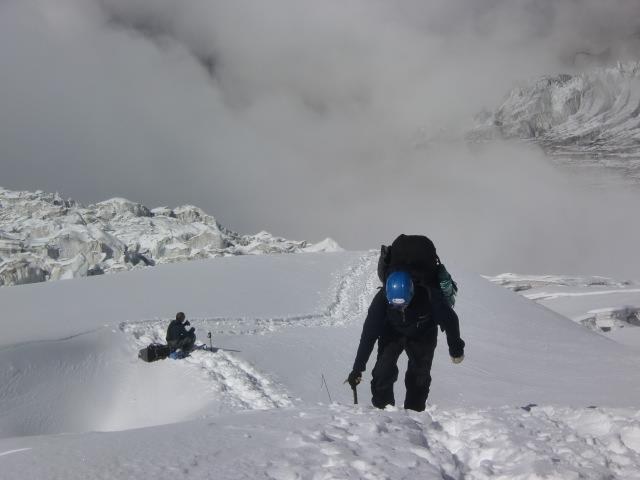All news
Sir Ranulph Fiennes' 'coldest journey' begins
South Pole.
By Matthew Priceþ BBC News. The team face a 2,000-mile journey acrossAntarctica, which they hope to start in March next year. Sir Ranulph Fiennes is leading a team of five other explorers in a quest to achieve a feat no other human ...
By Matthew Priceþ BBC News. The team face a 2,000-mile journey acrossAntarctica, which they hope to start in March next year.
Sir Ranulph Fiennes is leading a team of five other explorers in a quest to achieve a feat no other human has managed - to walk across Antarctica in the near permanent darkness and super low temperatures of winter.
Phase one of The Coldest Journey expedition - which aims to raise millions of pounds in donations for the Seeing is Believing charity to tackle avoidable blindness - begins later when the icebreaker SA Agulhas sets off from the River Thames.
The journey from a wintry Thames to the ice shelf ofAntarcticawill take just over a month.
During their sea voyage, team members will obtain data on marine life, oceanography and meteorology.
On Thursday afternoon, after a suitable send off, the SA Agulhas will weigh anchor and slip beneathTowerBridgeon its way to the world's coldest continent.
The expedition force is led by the man known as the world's greatest living explorer - 68-year-old Sir Ranulph Fiennes.
It's an expedition that's been in the planning stages for years, Sir Ranulph says on the bridge of the ship, while looking at a map of his route.
"The idea came up about four-and-a-half years ago. We started approaching the Foreign Office for permission to go and we finally got it 10 days ago."
Aboard the SA Agulhas is a giant crane. It will be used to lift some 200 tonnes of equipment onto the ice ofAntarctica.
The BBC's Matthew Price has been aboard the SA Agulhas to see how preparations have been going
It consists of three huge industrial sledges - each with a modified shipping container placed on top.
Inside two of them are living quarters, and supplies. In the third, a science lab.
Behind these there'll be another 14 smaller sledges, each transporting fuel.
That will power the two bulldozers that have been specially re-equipped for this expedition, in the hope they can drag the entire team across 2,000 miles of some of the world's most inhospitable terrain.
In front of this whole procession, two skiers will lead the way, pulling a small ground-penetrating radar system that will help them locate crevices. That will be crucial if they are to make it across.
The expedition proper - from the Russian base of Novolazareskaya to theRossSea- is due to begin on 21 March and is expected to take six months.
----------------------------------------------------------------------------------------------
Supplies
165 rolls of toilet paper (12 sheets per man per day)
20kg of dried egg
7,300 tea bags
4,400 packets of soup
30 toothbrushes
230kg of chocolate
600 metres of rope
15 pairs of boxer shorts per man
Boots with electrically-heated insoles
-----------------------------------------------------------------------------------------------
"The vehicles are a bigger potential problem than the people," believes Sir Ranulph. "Minus 80 could be damaging to lung tissue when you're breathing while skiing."
But he says that, "in the vehicles you have steel and rubber which don't like minus 70 - never mind when they're towing everything - so there is an unpredictable element there".
To get Foreign Office permission to go toAntarcticathey had to prove they could be self-sufficient. That's why the vehicles must be used to tow everything they might possibly need. In the Antarctic winter there's no way of being rescued.
Sir Ranulph wants to beat Norwegians to new Antarctic record
"That means everything from vehicle spares down to a toothbrush," says Brian Newham, who'll be on the team crossing the continent, and who's also been organising the gear for the expedition.
He's even been counting the number of sheets on a toilet roll.
"We're taking 165 rolls. That's one for all of us for every 2.25 days," he says.
Is that enough?
"I'd better have it right," he smiles.
Everything they take with them will be removed from the ice at the end of the expedition. Including the human waste.
There's enough food for each of the six-person team to last 365 days if it's necessary. They hope it won't be.
The food consists of specialist dried fruits, sports nutrition products, and normal dried foods like lasagne. They can't take tins with them as they'd freeze and burst.
"I can't say I think we can make it," admits Sir Ranulph.
"I don't know it's possible - it's rather like the Americans when they went to the moon. Was it possible? They didn't know."
Source: http://www.bbc.co.uk/news/uk-20619050
Fox News
Departure
The team of Alpari in the Low camp of Vinson
Vinson.
Hi! This is Lyudmila Korobeshko from the expedition "Alpari on top of the world." So, we are in Antarctica under the Mt.Vinson massif. Yesterday we arrived at base camp, spent a night, and today went up to the next camp, the so-called Low ...
Hi! This is Lyudmila Korobeshko from the expedition "Alpari on top of the world." So, we are in Antarctica under the Mt.Vinson massif. Yesterday we arrived at base camp, spent a night, and today went up to the next camp, the so-called Low Camp. It was quite a difficult trip. We're spent about 7-8 hours. Walking was difficult, because we have a heavily laden sledge. The back of Ivan Dusharin still hurts, but we hope that soon he will get better. The weather is still good. Near the camp in the morning quite a large avalanche came down ... But we are not affected.
Greetings for all.
Best regards !
Source: http://www.alpari-life.ru/low-camp/
Climb of Mt.Vinson is the final stage of the epic "7 summits in 300 days” for Lyudmila Korobeshko, Ivan Dusharin and Maxim Shakirov.
ITAR-TASS to declare about the seven volcanoes program
South Pole.
December 11 (Tuesday) at 14:00 in the ITAR-TASS /Tverskoy Boulevard, 2, 2nd Floor / will be a press conference on the topic "The Russians on the highest peaks of the continents." Recently, the popularity of the "7 Volcanoes" is growing. We ...
December 11 (Tuesday) at 14:00 in the ITAR-TASS /Tverskoy Boulevard, 2, 2nd Floor / will be a press conference on the topic "The Russians on the highest peaks of the continents." Recently, the popularity of the "7 Volcanoes" is growing. We are talking about the conquest of the highest volcanoes all continents over the world. InRussiathere are two people who are close to this performance - Alexander Abramov and Vyacheslav Adrov. In addition, Vyacheslav Adrov holds 2 records ofRussia/ Russian Book of Records / associated with the activities at altitude.
In a press conference we will meet: Honorary Polar Russia, vice-president of the Russian Geographical Society, Director of the Arctic and Antarctic Museum Victor Boyarsky, master of sport mountaineering, multiple conqueror of Everest, the head of "7 Summits Club" Alexander Abramov, recordsman of the "Book of Records of Russia" Vyacheslav Adrov.
Vyacheslav Adrov
An article about this (in Russian)
http://www.abajour.ru/files/92-99_198.pdf
Graham Hughes, British Adventurer, Becomes First Man To Travel To Every Country Without Flying
On January 1, 2009, Graham Hughes set out on his mission to visit every sovereign state on Earth without flying, and become a Guinness World Record holder in the process. Nearly three years later, on November 26, he achieved that feat after ...
On January 1, 2009, Graham Hughes set out on his mission to visit every sovereign state on Earth without flying, and become a Guinness World Record holder in the process.
Nearly three years later, on November 26, he achieved that feat after his passport was stamped with the markings of the world's newest country,South Sudan.
Hughes, 33, has visited all 193 United Nations member states, as well as Taiwan, Vatican City, Kosovo, the Palestinian territory, and Western Sahara -- all by train, bus, taxi or ship, spending an average of 10 pounds per day, reports The Telegraph. Need proof? He has photographed every page of his passport as of June 2011.
"The main feeling today is just one of intense gratitude to every person around the world who helped me get here, by giving me a lift, letting me stay on their couch or pointing me in the right direction," Hughes told The Daily Telegraph from Juba, the capital of South Sudan, after achieving his goal.
Of his journey's challenges, Hughes said: "People asked me how I was going to get to Afghanistan or Iraq or North Korea, but they were the easy ones, you don't even need a visa for Iraq, you just walk across from the border in Turkey...The really tough ones were places like Nauru, and the Maldives and the Seychelles, island countries where there were also pirates."
Along the way, Hughes raised money for WaterAid and filmed for the National Geographic Channel. Check out his very complete travel map of the world here and his interview with a New Zealand TV station below.
Source: huffingtonpost.com
Just last week, Graham Hughes became the first person to visit every country on earth without flying. After almost four years of travel, the 33-year-old fromLiverpool,England, set foot in his 201st and final country,South Sudan. When he began his challenge, the country did not even exist, but now it represents the crowning glory of a long and frustrating journey.
It started as a mad dash, one-year trip, back toAustraliato be with his girlfriend, captured on the TV show, Graham’s World, on the National Geographic Adventure Channel. But things did not turn out quite as planned. Hughes broke up with his girlfriend, the show ended, and the journey took almost four times as long as intended, but he has finally achieved his goal.
Hughes caught the travel bug early, visitingEastern Europewith his family as the Iron Curtain was coming down, and has not really stopped since. He does not, however, really have the look of a modern day adventurer. There’s no army physique or weathered features, just a typical looking English guy in a fedora, the hat made famous by Indiana Jones. Indeed, Hughes has dubbed himself the "Thinking Woman’s Indiana Jones," but it is another one of his fictional role models that he most resembles, Phileas Fogg. The 19th-century protagonist of Jules Verne’s Around the World in 80 Days was an unflappable charmer and schemer, able to think on his feet and talk his way around the world. Like Fogg, Hughes will return toLiverpoolby boat, having succeeded in a scheme, very much in the vein of a late Victorian adventurer.
Here, Hughes tells us why theUnited Stateswas one of the hardest places to enter, what pieces of equipment have been indispensable to him over the past four years, and what he plans to do if new countries are created.
Why did you embark on this journey?
I think it’s the same sort of reason people give for Everest: because it’s there. The challenge was there and no one had done it before. It was a Guinness World Record I knew that I had the ability to achieve and I thought it was possible. I’d traveled before starting this and I wanted to do at least one amazing thing in my life—and now I’ve done it.
You’ve said it was a decade-long dream. How did it come to fruition?
I got the concept for it when I went backpacking in 2002. I’d bought an around the world ticket and went to a lot of places. I had the most amazing experience. I said after that, Would it be possible to get to every country in the world without flying?
Throughout the 2000s, as the world was getting more peaceful and wars were ending in West Africa andCentral Africa, I realized the world was getting a bit more easy to get around. By 2008, I realized I could do this in the next couple of years. I spoke to people at Lonely Planet Television inAustraliaand they really liked it and said you could probably do it. They commissioned me to make a TV series that was on National Geographic a couple of years ago, the first year of my adventures.
It’s taken almost four years to do. Did you ever think about quitting at any point?
I never thought about quitting. I had some difficulty last year because my sister passed away. After that I didn’t want to quit, but I wanted someone to take the reins and sort of deal with the complicated stuff and arrange things for me. For the whole trip I’ve been a kind of one-man band. It was a lot of responsibility to keep it going, but there wasn’t a point where I thought I was going to give up. I felt like it would be letting so many people down, people who had helped me on the journey.
Did you have any indispensable bits of equipment that kept you company throughout your travels?
My GPS logger is still with me. My trusty camcorder has been with me all the way. There are bits of equipment that really are indispensable when you’re traveling, like a Swiss Army Knife, wet wipes, a bank card, and a passport. But I travel pretty light.
Which was your favorite country?
A little island state calledPalau.
Which was the hardest country to get in to?
The U.S.A. now, because I need some crazy visa! But other than that, the Seychelles because of the Somali pirate situation. I tried from about seven different places in the world to get to theSeychellesbefore I actually cracked it.
What was the issue with the U.S.?
I was on a ship going to Micronesia and Palau. It stopped in Guam, which is part of the U.S.commonwealth, but they wouldn’t let me off the ship. They said I needed a special visa waiver that costs $100 and I had to apply for it three days in advance. How is that not a visa?
What was the most dangerous experience or place?
I was inSenegaland I had to get some fishermen to take me over toCape Verdeon a pirogue, a wooden canoe with an outboard motor on it. I was on it for four days in the open ocean with no radio, no distress signal, no satellite phone, and no means of communication if anything went wrong.
Was it terrifying?
It was fine, I suppose. There was no storm or anything. I watched the movie The Perfect Storm a few weeks afterwards. If I’d watched it before, it might have been a different story.
Who were the friendliest immigration officials?
Mauritius was OK. They were pleased to see me. Going into Afghanistan, the guy was laughing. The border guard asked me what I was doing there. I said, "I’m a tourist." He said, "You’re no terrorist, we have too many terrorists here." That kind of thing. Some places people have been really welcoming. In Sierra Leone, the guy on the border basically gave me a hug because I’m British. It was because of the conflict there that was ended in 2002. He said the British saved his life.
What aspect of this journey would you consider your greatest achievement beyond the title and the record?
Not going home in four years—that’s a pretty good achievement! I think having the determination to see it through to the end when things got very difficult. In the first two years, I traveled through 184 countries. In the last two years, I’ve been to 17. That’s because they’re all islands in the middle of nowhere. Or places like theSeychellesand theMaldivesthat are in pirate areas.
The record might not be static. Are you scanning the map to look at the potential for new countries to come into existence?
Yes. I want to do this for the rest of my life. The idea is that every time a new country gets created, I go and visit it overland. I’ll take three or four months out of my life to go and do that. I kind of like that idea. I’m keeping an eye on things.
Are you driven by the idea of fame and creating attention as an adventurer?
Long term I want to make feature films and tell stories, so that’s not that important to me. I do like that idea, but it’s not the main reason I did this. I did this more than anything because I wanted to get in the Guinness Book of World Records, and it had never been done before, and it was something that I’m good at. I’m really good at travellng! I don’t get ill when I travel, I can sleep anywhere. I’m great about waking up when I need to get on a train. I seem to be naturally adapted very well to this kind of lifestyle.
Do you have any role models as an adventurer or a traveller?
My role models are obviously Phileas Fogg, Michael Palin, and my father. Those are my inspirations.
Your journey was different from most people’s experience of travel. How meaningful is as a travel experience when you constantly have to think about the next country or the next challenge?
Obviously, there’s a difference between traveling for the sake of traveling and going on holiday because you need to relax from work. I don’t feel like I’ve been on holiday for four years at all. I feel like I’ve been working for four years toward something.
If you want to sit on a beach and relax, that’s fair enough. I get a bit annoyed when fellow travelers will tell you that you’re not doing it right. Just because you didn’t go to this hut inLesotho, you’ve never really experiencedSouthern Africa. Come on, seriously? Everybody has his or her own experiences of travel. Travel is a very subjective thing. I don’t think there is a right way to do it and a wrong way to do it. I just think there’s a way that you enjoy and I actually enjoy this.
What’s next for you?
I want to do some more TV shows. I enjoyed doing the show for National Geographic. I like telling stories. At the end of the day, I get a random email from some person halfway around the world, saying they’ve been inspired by my travels.
Olya Rumyantseva from the base camp Vinson
Vinson.
Hello! It is Olya Rumyantseva from Antarctica. This morning we took a small airplane and flew from the Union glacier to the base camp ofMt.Vinson. Now we are checking our things, settle down putting the camp. Soon we will prepare ...
Hello! It is Olya Rumyantseva from Antarctica. This morning we took a small airplane and flew from the Union glacier to the base camp ofMt.Vinson. Now we are checking our things, settle down putting the camp. Soon we will prepare dinner. And tomorrow morning, early, we plan to start fro the lower camp. We are fine, the weather is pleasant. We hope that this will continue.
All, bye!
The team “Alpari on top of the world” came in Antarctica
South Pole.
"Yes, we are now already in Antarctica. In the morning the phone woke us up at 6 am. We leave. At 9 am we took off from Punta Arenasand arrived at Union Glacier. Now it's warm here, we can say even hot. This is summer. In general, we are ...
"Yes, we are now already in Antarctica. In the morning the phone woke us up at 6 am. We leave. At 9 am we took off from Punta Arenasand arrived at Union Glacier. Now it's warm here, we can say even hot. This is summer. In general, we are not fooled, we really came to the south. We all feel good, the mood is amusing. And we hope that today, a little later, we will fly to the Vinson Base Camp".
Lyudmila Korobeshko, Ivan Dusharin and Maxim Shakirov will climb the last mountain of their attempt “Seven Summits in 300 days”.
In Punta Arenas
Lyudmila Korobeshko met Ivan and Max. In a day there will be a flight to Antarctica
Vinson.
The plane was delayed and landed just after midnight. Ivan Dusharin and Max Shakirov came out last, than they made Lyudmila be worry. 48 hours of flights were pretty tired for them. However, they immediately started with jokes. ...
The plane was delayed and landed just after midnight. Ivan Dusharin and Max Shakirov came out last, than they made Lyudmila be worry. 48 hours of flights were pretty tired for them. However, they immediately started with jokes.
But there is no time to rest. The weather is good and representatives of ALE promise 4th or 5th December a flight to Antarctica at Union Glacier.
Golden Axe of Russia 2012
The 7 Summits Club was a sponsor of the main victors of a year’s ceremony of Mountaineering Federation of Russia, which took place in the evening of December 1 at the Luzhniki Press Center. The main prize of the national award "Golden ...
The 7 Summits Club was a sponsor of the main victors of a year’s ceremony of Mountaineering Federation of Russia, which took place in the evening of December 1 at the Luzhniki Press Center.
The main prize of the national award "Golden Axe of Russia 2012" was awarded to the team of Moscow: Sergei Nilov, Dmitry Golovchenko, Alexander Lange - for a new route to the summit of Muztagh Tower in the Karakoram. The coach and the expedition leader - Sergei Kotachkov. The result is appointed by voting of captains of six nominees.
Nicholay Totmyanin presents " Golden Axe of Russia in 2012" ...
The Moscow team has also got the main prize "Crystal Peak" established by portal Risk.Ru, where the winner was appointed by voting on the Internet. Nte same Moscow team won and a third prize - it was the audience award, certain by on-site guests in the evening.
"Steel Angel 2012" for the best female climbing achievement of the year went to Krasnoyarsk. His owners are Paulina Galatsevich and Irina Bakaleynikova - for climbing Zamin Karor Wall in the championship ofRussia.
53-years old grandmother Irina Bakaleynikova is the Queen of Russian climbing
The best "outdoor project of the year" according to the users of the site Risk.Ru is project "Ark of Hope. Dnepr 2012." Announcement of the results caused a round of applause. All welcomed legendary Crimean climber, courageous fighter with his disability Yuri Lishaev, known to all as Fantik.
About 4000 km on kayak along the river of Dnepr and Black sea shore, solo and with paralyzed legs...
Lyudmila Korobeshko with good wishes with the first day of summer!
Vinson.
Team Captain of "Alpari on top of the world" is now in the southernmost city in the world -Punta Arenas. Here it is the first day of summer. Summer in the south of Patagonia is cool, but all here blooms and green . Lyudmila prepares to meet ...
Team Captain of "Alpari on top of the world" is now in the southernmost city in the world -Punta Arenas. Here it is the first day of summer. Summer in the south of Patagonia is cool, but all here blooms and green . Lyudmila prepares to meet his friends, teammates Ivan Dusharin and Maxim Shakirov, which today fly out of Moscow. The final stage of the epic "7 summits in 300 days" begins, the goal - Antarctica and Mount Vinson....
Valeró Putrin (1940 – 2012). Obituary
Valery Putrin, the former president of the Mountaineering Federation of Russia, died suddenly on the morning of 29th of November. He went out in the morning to clean snow from the car and fell. Instant death. In the XXI century, Valery ...
Valery Putrin, the former president of the Mountaineering Federation of Russia, died suddenly on the morning of 29th of November. He went out in the morning to clean snow from the car and fell. Instant death. In the XXI century, Valery became a collector peaks climbing Mont Blanc, Kosciuszko, Mount Fuji, Aconcagua, Kilimanjaro. In 2010, at age 70, he tried to climb on Mount McKinley. Due to the illness of Comrade their assault failed. By all signs, Valery was in good shape and there were no signs of such end.
Putrin Valery (1940 r.) - A graduate of the Minsk Radio Engineering Institute (1964), studied science, has three certificates on inventions (1976, 1977). Master of sports of cycling and mountaineering (1970). He has participated in the national championship on mountaineering (1968, 1970, 1971, 1974, 1979), was the trainer of the international mountaineering camps in 1976, 1978, 1979, 1980, 1983 and 1984. Until the last days Putrin worked as chief specialist at the Research Institute of Radio.
In 1987 Putrin was a leader of expedition of USSR national team, that made the first winter climb on the peak of Communism. In 1991, he was the head of the first Russian Himalayan expedition, which opened a new route to the summit of Cho Oyu (8201 m).
Photos from Mt. McKinley expedition
On Kilimanjaro
Kazakhstan team - world champions in high-altitude mountaineering 2012
Lenin Peak.
November, 24 Eurasian Association of Mountaineering and Climbing (EAMA) appointed the first in history champion of the world in high-altitude mountaineering class. The judiciary brigade consisted of authoritative climbers ofUSSR: E.Ilinsky ...
November, 24 Eurasian Association of Mountaineering and Climbing (EAMA) appointed the first in history champion of the world in high-altitude mountaineering class. The judiciary brigade consisted of authoritative climbers ofUSSR: E.Ilinsky (Kazakhstan) - Chief Justice, A.Shabanov (Uzbekistan),
V.Shataev (EAMA), V.Yatsko (Ukraine), A.Horoshih (Russia), D.Grekov (Kyrgyzstan), K.Valiev, D.Muravev, B.Studenin, A.Timofeev (Kazakhstan), A.Skopin (Kazakhstan- Chief Secretary).
Competition is open to everyone, from all over the world. World title is quite official, but not all-world recognized yet.
Eurasian Association of Mountaineering and Climbing was founded in 1992 as the successor to the Mountaineering Federation of theUSSR. However, its work has long been modest. In recent years, an activity of EAMA significantly increased. Finally, they managed to normalize relations with the FAR and start a new life.
High-altitude mountaineering class World Championship 2012
1st place (7.00 points) - The team of Kazakhstan Mountaineering Federation: leader and head coach Vassily Pivtsov. Partners: Ildar Gabbasov, Alexander Sofrygin. For the ascent to the summit of Khan Tengri (6995 m). via the center of the North Face, 12-20 August. 6B grade.
7 Giants for Stefan Glowacz - Project Red Bull Giants 7
Our Seven Summits Club recently opened a new route named “Seven Summits” to the top of Mount Ai-Petri in Crimea. Objects may be called 7 Summits could be found everywhere in the World. One of these objects with the name "Seven ...
Our Seven Summits Club recently opened a new route named “Seven Summits” to the top of Mount Ai-Petri in Crimea. Objects may be called 7 Summits could be found everywhere in the World. One of these objects with the name "Seven Giants" came not so long ago in the finals of "The Seven Wonders of Russia Awards." Now its can get international recognition, if a mission carried out by the great German climber Stefan Glowacz and RED BULL will be successful. And it will certainly not be simple: a long winter campaign in the circumpolar region to be completed with extreme winter climbing. Stefan wants to climb on each of the pillars. Good luck!
Stefan in Moscow
STEFAN
Basically, Stefan Glowacz had no other choice than to become one of the most successful alpinists ever. At an early age his parents shared with him their love of the mountains and different terrains that he would later claim as home. When Glowacz speaks of those childhood memories, it seems he was always destined to climb. "As a child, I climbed on every rock while on hikes with my parents." His fascination with rocks never let go of him, even when the rocks became steeper and the surrounding terrain evermore treacher- ous. His relentless motivation enabled him to continue onwards and upwards to meet new challenges.
It’s this mixture of humility, childish curiosity, and indescribable pride that sends SG, born in 1965, to all areas of the world. His parents laid the groundwork, but his own ambition transformed him into an all round climber and selfmade entrepreneur. In the late 80s, many lived to climb, but Glowacz wanted more , he wanted to climb to live. He discovered early that his passion may not end with rappelling, in order to transform it into a profession and that "work" for real pro's started at the bottom of the vertical wall. Glowacz won the prestigious Rock Masters in Arco, Italy and was invited as a guest on the television show "Das Aktuelle Sportstudio" in Germany and acted in the Werner Herzog movie "Der Schrei aus Stein". Being the foster child of the mountaineering legend Reinhold Messner, he ultimately became the precursor of the free climbing movement.
A lot of warm words about Australia. Project Alpari On Top of the World
Our team climbed Mt. Kosciuszko 5th of November. This was the sixth summit from seven. Please find below short narratives from the team members. The Team: Lyudmila Korobeshko is the captain of the team and the only Russian woman to have ...
Our team climbed Mt. Kosciuszko 5th of November. This was the sixth summit from seven. Please find below short narratives from the team members.
The Team: Lyudmila Korobeshko is the captain of the team and the only Russian woman to have both summited Mount Everest and been to the North and South Poles. Ivan Dusharin, the “patriarch of Russian alpinism” is an internationally recognized climber with the supremely challenging K2, among many other impressive climbs, under his belt. Maksim Shakirov, author of “New Year on the Peaks”, planted the flag of the 2014 Olympic Games atop Mount Everest and Mount Olympus.
FROM THE JOURNAL OF IVAN DUSHARIN: AUSTRALIA
3.11.2012. It’s morning here in Sydney. We’re 7 hours ahead of Moscow. The flight was tough. We almost feel like we’re drunk. It took us more than a day to fly out here – I guess that’s just something you have to deal with. After getting off the plane, we made it through immigration and across the border relatively easily, but nobody was there to pick us up. Lyudmila called a couple of numbers that only she had. They told her to wait. We waited. Suddenly a man passed in front of us holding a sheet of paper. For some reason, something written on that sheet of paper felt familiar to me. “Lyudmila, I think that’s the guy who’s coming to pick us up,” I said, pointing out the man. Lyudmila caught up to him. On the sheet of paper he was carrying, I spotted the words “Mr. Dusharih”. So that’s what felt so familiar – my name.
We checked into the hotel, but we would have to wait until 14:00 before we could get settled into our rooms. We left our stuff at the hotel and went for a walk around the city. It’s a nice looking city, with a lot of plants, water, fountains and interesting architecture – both old and new. The sea (or the ocean to be more precise) really adds to the atmosphere. We began to look for the fish market. We could smell the place from more than a half kilometer away. It was quite impressive. There were giant lobsters, crabs, all kinds of shrimp, octopuses, squid and dozens of varieties of fish and shellfish. We decided we should go somewhere to order some seafood.
We went for a nice walk before returning to the hotel to unpack our stuff and rest for a couple of hours. If we didn’t have the chance to rest, we would have been completely miserable. Flights like that can really take their toll on you.
At 17:00 we headed for down town Sydney. We decided to have dinner in an exotic place – in a restaurant in the Sydney Tower, 225 meters above the city. The elevator was fast. Our ears popped on the way up, like in an airplane. We spent about an hour and a half in the rotating restaurant. We sampled some of the local delicacies and enjoyed an amazing panoramic view of the city and surrounding area. It was fantastic! From that height, you can really see how downtown Sydney is laid out. After dinner, we paid a visit to the world-famous Sydney Opera House.
4.11.2012. It took us a long time to sort out the rental car. We ended up with a family car that seated nine. It was like a small bus. Max took the wheel. Lyudmila was the navigator. I was just a passenger. As we stepped out of the car near the hotel, we heard a guy speaking in Russian. It turned out he was fromKiev. He had already been living in Sydney for 23 years. He explained to us how to get out of the city and onto the road leading to Canberra. We got lost anyways. It took us 8 hours to make it there. After we settled into our hotel, we worked on figuring out where we would start our climb from. We chose a route starting from Dead Horse Gap, longer and more difficult than the standard route to the summit of Kosciuszko. I think tomorrow’s climb should be interesting.
5.11.2012. The climb. We arrived at our starting point around 9 in the morning. It took me a while to pick out my shoes. In the end I selected a pair of hiking boots. The first part of the climb was steep and took us through a forest of dead eucalyptus trees. Seeing the large mass of dead plants, we felt a sense of pity for the local flora, which, as we were told, was burnt in a fire. The ashy foothills looked aged – truly a sad sight to see. After about an hour on the trails, the path flattened out a bit and we began to notice patches of snow. Things got a bit easier. Tourists rarely take this route, so there aren’t any markers or railings to help you find your way if the trails have been covered by snow. You just have to keep heading in one direction to keep from getting lost. We put on some extra clothing. We passed a guy descending the mountain with a pair of alpine skis tied on to his backpack. We said “Hi”. He warned us that it was really windy at the top.
After traversing a slope covered in snow, we merged onto the main trail. The trail was paved in stones and guarded by a railing coming about 30 cm off the ground. We had about 6.5 kilometers to go to the summit. By this point, we were hiking across an open area and the wind was really starting to blow. We were worried we might get blown off the path. I started to understand why not everyone is able to reach the summit. Here, it’s Mother Nature that’s calling all the shots.
We moved along at a brisk pace in spite of the wind. We came across stretches of the trail that were buried under snow. The entire summit was covered in snow too. Along the trails we noticed tracks from skis. Even in the offseason, it appeared that enthusiasts still carried their skis with them, even if they couldn’t go skiing.
A spiral path led us the summit of Kosciuszko, 2,228 meters above sea level. At the very top of the mountain, the winds were near gale-force, tearing away at our flags. A young man and woman made it to the summit shortly after we did. It turned out they were our compatriots – from Ekaterinburg. Even here in Australia, on the summit of Kosciuszko, halfway across the globe, we ran into Russians. It was nice.
We descended pretty quickly. We had the wind at our backs on the way down, which made things considerably easier. The entire climb took us about 8 hours.
6.11.2012. Back to Sydney. Lyudmila took the wheel on the way back. She’s a fast driver and confident behind the wheel. She remembered the way. Lydumila and Maxim switched places a couple of times, but I remained in the passenger’s seat. Our navigator led us to a beach in Sydney. It wasn’t particularly warm out, but hey – the ocean’s the ocean. The water couldn’t have been more than 18 C, but we jumped right in. The giant waves crashed into the shore, then drew back into the ocean, leaving behind a blanket of foam. There were hardly any people in the water. Most of the people at the beach were sunbathing.
Max was really intent on unwinding. He spent nearly 40 minutes splashing around in the water. Lyudmila and I walked back to the sand to warm up a bit before throwing ourselves into the water again. We had certainly felt the lure of the ocean on the trip. Its undulating waves had beckoned us in. What can I say? It was pure joy. We might never have left if not for how cold the water was. We would have liked to spend more than 2 hours there, but what could we do? We were running on a really tight schedule.
We dumped our stuff off at the hotel before heading back to eat at the tower restaurant again and check out the view of Sydneyat night. It was impressive. We could see the bright lights, the ads and the signs covering the skyscrapers. They were beautiful and original.
7.11.2012. Today was the Day of the Great October Socialist Revolution of 1917. Back in the Soviet Union, this was a significant holiday. We forgot all about it. I guess that’s just human memory. We had breakfast in the hotel. We had to hurry. It was our last day in Sydney and we still had lots left to see.
By chance, we ended up in a prison museum in downtown Sydney. An elderly gentleman there offered to take us on a tour. By local standards, the prison was ancient – more than 200 years old. As it turned out, this was a place where prisoners were sent not only from England, but from America and other countries in Europeas well. It was intended for those serving life sentences. Most of the prisoners who served their time there remained on the island rather than heading back forEurope. Someone would need to break in the island after all. It was the first prisoners themselves that had built the prison. There were no beds or cots at all – only hammocks.
We headed back to the ocean through the botanical gardens. The gardens were really well kept up. We visited the gift shop. Then we decided to take a water taxi to the aquarium. The view of Sydney from the water is spectacular. The water taxis can get you anywhere you need to go in just 15 minutes. We didn’t make it into the aquarium. We didn’t have enough time. Too bad.
We made it back to the hotel at 16:30, gathered our stuff, and then left for the airport. We’re flying back through the same airports: from Sydney to Bangkok to Dubai to Moscow.
Èñòî÷íèê: http://www.alpari-life.ru/en/zdorovo-no-slishkom-bystro-otryvok-iz-dnevnika-ivana-dusharina/
LYUDMILA KOROBESHKO:AUSTRALIA
The first thing I would like mention about the trip to Australia was our tight deadline. Just 5 days? That seemed too fast. It took us two days to fly out there. After you arrive, it takes you a while to gather your bearings. However things weren’t as bad as usual this time. We’ve flown so many times in the past year that it appears that our bodies are beginning to adapt to flying out ofMoscow.
When we got toSydney, we really tried to keep from falling asleep right away. It was late back home in Moscow, but it was early in the morning for us. So how do you avoid dozing off? Healthy food and fresh air, of course. Having decided to avoid taxis and public transport, we armed ourselves with a map of the area and set out for the fish market on foot.
On our walk, I was struck by the contrasting styles of architecture in Sydney. We were in downtown Sydney, surrounded by skyscrapers and towers, but we kept on coming across parks, gardens, ponds and all kinds of fountains. One of the things that really left an impression on us was the ibises – large exotic birds with long curved beaks. We came across them virtually every step of the way, especially in areas with restaurants and cafes.
Naturally we ran into a large throng of ibises and pelicans near the fish market. As soon as a new shipment of seafood would arrive, the birds would flock to scavenge some of the scraps. The employees at the market did all they could to shoo away the birds.
We treated ourselves to a bit of fish and returned to the hotel. We found our rooms, unpacked our stuff, then worked on figuring out where we could rent a car and where we could connect to the internet to send out our first photos and messages.
In an attempt to take in as much of Sydney in the little time we had, we decided to ascend to the top of the Sydney Tower. From there you can see everything in Sydney: the Pacific Ocean, the Sydney Opera House, the Harbour Bridge, the Botanical Gardens and much more. It was well worth it.
We didn’t get much sleep that night, even though we hadn’t slept much at all the past two nights on the airplane. We all woke up early – around 5 or 6 in the morning. I somehow mustered up the strength to go for a morning jog throughSydney.
After breakfast, we set out to pick up our rental car. I have to say that this may have been one of the most interesting experiences of the whole trip toAustralia: our first time driving on the left side of the road. Max nobly volunteered to take the wheel. Everybody chipped in with advice – including the GPS system and its sexy female Australian voice. It didn’t come as a surprise to anyone that it took us three tries and 40 minutes to find our way out of downtownSydney.
We stopped just outside of the city and I encouraged Max to take a quick smoke break to help cope with the stress of his job as chauffeur. The trip toCanberrawas quite memorable, both for the beautiful landscape and for the numerous signs warning about the danger of kangaroos and wombats. By chance, we happened upon a street music festival in the town ofCooma. We had a good time there.
AfterCanberra, the landscape really started to change. We began to see real mountains and forests of eucalyptus trees. Near the entrance to theSnowyMountains, a whole group of kangaroos crossed the road in front of us. Fortunately none of them were hurt (a lot of animals get run over in the Australian wilderness, especially at night).
We made it to theSnowyMountainsduring the evening and found thevillageofThredbo(home to a ski resort), where we would be spending the night. Before dinner, we decided to drive out to our starting point so we wouldn’t get lost the next morning.
In the morning, we headed out for “Dead Horse Gap”. We weren’t terribly thrilled with the weather. The wind was pretty strong. Our path took us through a burnt eucalyptus forest and alpine meadows. When we made it out of the forest, the wind nearly knocked us off our feet. There was even snow in some areas.
We made it to the summit around lunchtime. There we had an interesting encounter with two climbers from Ekaterinburg (Russia). They were working on the 7 Summits program too. Kosciuszko was number 4 for them.
It turned out, they had read about our expedition online and tried to time their climb to coincide with ours. It was nice running into them. We began our descent from the summit during the evening. The next morning, we had to wake up early again in order to make it back to Sydney, 500 kilometers away. We were hoping to get back early so we could dip our feet in thePacific Ocean. Fortunately, we made it back in time. Dreams do come true.
It’s been nice to warm up a bit. Next up is Antarctica.
Èñòî÷íèê: http://www.alpari-life.ru/en/lyudmila-korobeshko-avstraliya-poslevkusie/
7 Summits Collectors 11-2012
Everest.
Aiming High…On The Ground. By Brandon LingleNov. 15, 2012. Marshallskis down from the summit of Australia's highest peak, Mount Kosciuszko, in October 2011 with an Air Force flag flying from his pack. When ...
Aiming High…On The Ground. By Brandon LingleNov. 15, 2012.
Marshallskis down from the summit of Australia's highest peak, Mount Kosciuszko, in October 2011 with an Air Force flag flying from his pack.
When the V-22 Osprey pilot isn’t flying, remodeling his bathroom, helping the Red Cross, speaking at schools, or working out, he’s running a first-of-its kind challenge to climb the highest peak on each continent.
Next April, Marshall, a 34-year-old Special Operations pilot with several combat deployments to bothIraqandAfghanistan, will lead a group of seven Airmen on their most impressive mission to date— to scaleMount Everest.
The bid for the top of the world would wrap up the U.S. Air Force 7 Summits Challenge. The group hopes to make history as the first military team to climb each continent’s highest mountain — and the firstU.S.military team to conquer Everest.
The Mercer Island, Wash. native and long-time mountaineer—who bagged 27 peaks as an Air Force Academy cadet—first considered an Everest attempt while visiting the mountain’s base camp in 2001 shortly after graduating from the Academy.
“I had this strong intuition that I needed to come back and climb Everest one day,” he says. “But, it needed to be for a reason bigger than just personal conquest.”
The reason came in 2005 when an Air Force MC-130, call sign Wrath 11, crashed in the Albanian mountains, killing nine, including several ofMarshall’s friends. “Wrath 11 hit close and shook me up,” he recalls. “I volunteered to ascend the mountains to search for survivors, but ended up helping coordinate the recovery. I felt powerless… every bit of me wanted to get up that mountain to help. I found out later there was no chance of survivors.”
Two months after Wrath 11, two ofMarshall’s Academy classmates, Capt. Derek Argel and Capt. Jeremy Fresques, died in anIraqcrash, along with three other airmen.
These losses droveMarshallto find a way to help his fallen friends’ families. “Remember walking around a track to raise money for your school or charity? Well, I decided to take it vertical. For every thousand feet we climbed, we’d ask people to donate to the college education of these kids.”
So, the Air Force 7 Summits Challenge was born, and the team has tackled six of the seven summits—Russia’s Mount Elbrus, Tanzania’s Mount Kilimanjaro, Argentina’s Mount Aconcagua, the U.S.’s Mount McKinley, Antarctica’s Mount Vinson, and Australia’s Mount Kosciuszko—and countless others in training. Team members mark their accomplishment with memorial pushups, in honor of their fallen friends, on each summit. So far, about 25 men and women have climbed with the team since the challenge began, and they’ve raised more than $60,000 for military charities like the Special Operations Warrior Foundation.
Though not funded or officially sanctioned by the Air Force, the military and climbing worlds seem to converge somewhat smoothly for the team. Marshall, who’s currently stationed inAmarillo,Tex., said commanders generally support the project thanks to the team’s intense planning and risk-mitigation process.
“Mountains are excellent leadership laboratories,”Marshallsays. “We get to work in small teams in extreme conditions. Climbing takes a combination of leading and following to survive together.”
And, sometimes these worlds collide. “I was on Mt. McKinley 24 hours from summiting when my unit told me via satellite phone that I needed to return immediately for a deployment,” he says. “Had to leave my team and haul ass back to base.”
With luck, the realities of military life won’t interrupt the climb of a lifetime for the seven Airmen who’ve committed to the Everest summit attempt and are training at their bases across the country. The Everest team includes:
– Major Graydon Muller, 33, a UH-1 and Mi-17 instructor pilot fromDuvall,Wash., stationed atHurlburt Field,Fla.
– Captain Andrew Ackles, 29, a TH-1N instructor pilot, fromAshland,Ore., stationed atFort Rucker,Ala.
– Captain Marshall Klitzke, 30, a KC-135R pilot fromLemmon,S.D., currently an instructor pilot at the U.S. Air Force Academy, Colo.
– Captain Kyle Martin, 29, an F-16 instructor pilot and mission commander fromManhattan,Kan., currently flying T-38s at Langley Air Force Base,Va.
– Captain Colin Merrin, 28, a Global Positioning System satellite operations mission commander fromSantee,Calif., stationed at Peterson Air Force Base,Colo.
– Staff Sergeant Nick Gibson, 36, a reserve pararescueman and physician-assistant student from Gulf BreezeFla., stationed at Patrick Air Force Base,Fla.
Recently, Marshall announced Chad Jukes, 28, ofRidgway,Colo., featured in the documentary High Ground — about 11 wounded warriors climbingNepal’s 20,000 foot Mount Lobuche— plans to join the team.
“Chadis aiming to become, what I believe will be, the firstU.S.serviceman with a combat-caused amputation to climb Mount Everest,”Marshallsays. “Several other wounded warriors and supporters also plan to trek with us to Everest base camp this spring.”
“Climbing these peaks is my way to deal with the pain and sadness that sits in my stomach from the losses of friends and colleagues,”Marshalladds. “I use physical exertion and time outside as my way to blast depression and sadness. After just a day hiking trails on the outskirts of town, I come home refreshed, reenergized, and looking forward to getting things done. If it wasn’t for this, I think the bad experiences would get the best of me. I hope that through this challenge we can help other military members use the outdoors and adventure sports to improve their emotional health.”
Yes, Major Marshall is a busy man, and he’ll get busier as April approaches. But as John Muir noted, “the mountains are calling and I must go.” Same for Marshall and his team.
Major Brandon Lingle served as a public affairs officer inIraqandAfghanistanand now is at Air Combat Command at Langley Air Force Base inVirginia. The views expressed here are those of the author and do not reflect the official policy or position of the Department of the Air Force, Department of Defense orU.S.government.
Read more: http://nation.time.com/2012/11/15/aiming-high-on-the-ground/#ixzz2DISOcXyC
Chad Jukes
Everest rubbish turned into art
Eight tonnes of litter left onMount Everesthas been turned into 75 works of art.
An artwork commissioned for the "Everest 8848 Art Project" on display in Kathmandu.
Photo: AFP/Getty Images
Matt Dickinson, author of the Mortal Chaos series and one of the Brits who has reached the summit ofMount Everest, offered a surprising insight into life on top of the world once when we met. He said: "When you get up to the very top of Mount Everest there is a remarkable amount of rubbish that has been left behind - old rope, discarded oxygen cylinders, broken tents, beer cans and bottles."
A group of artists have now turned eight tonnes of this trash - including the remains of a helicopter - into works of art and sculpture to highlight the issue of littering on the slopes of Everest. It took 65 porters and 75 yaks to carry down the rubbish from the mountain over two Spring expeditions.
The exhibition of 75 pieces commissioned for the 'Everest 8848 Art Project' is on display in the Nepalese capitalKathmandubefore it moves to Pokhara next week.
Project organiser Kripa Rana Shahi said: "We thought that this would help promote the artists as well as contribute to making Everest clean. We were happy to get the trash and (the waste collectors) were happy to get rid of it."
Fifteen Nepalese artists spent a month preparing pieces for the exhibition. In one of the works, by painter and poet Sunita Rana, white shards of aluminium from drinks cans are fashioned into medals signifying the bravery of mountaineers, while black metal tent poles are transformed into a wind chime.
Group of artists is staging an exhibition of sculpture made from tonnes of trash collected onMount Everest, highlighting the toll that decades of mountaineering have taken on the world's highest peak. Discarded oxygen and cooking gas cylinders, ropes, tents, glasses, beer cans, plastic and even the remains of a helicopter make up 75 artworks commissioned for the "Everest 8848 Art Project" on display in Kathmandu.
In another, remains of a helicopter which crashed in 1974, while carrying food for Italian climbers, are incorporated into an idol of the Hindu God Ganesh. The artworks range in price from £12 to £150,000, and several pieces have already been sold.
"As the word on the Everest garbage spread, it tarnished the image of our country. I was saddened when the foreigners talked about Everest as if it were a dumping site," said Everest Summiteers Association president Wongchu Sherpa. "We have recommended that if a climber is found littering the mountain, he or she should be banned for five years from climbing," Sherpa told AFP.
http://www.telegraph.co.uk/culture/art/art-news/9695352/Everest-rubbish-turned-into-art.html
---
Olympic torch light in auction to support Nepal
Famous mountaineer Sir Chris Bonington is delighted that the auction of his Olympic torch has raised £13,550 for a charity helping people in Nepal.
Sir Chris Bonington had kept the Olympic torch light in auction on Wednesday to support
The mountaineer climbed Snowdon in North Walesas part of the torch relay route and sold the torch in a sealed bid auction to raise money for Community Action Nepal, which is led by his fellow Cumbrian-based mountaineer Doug Scott.
Being a small charity their overheads are minimal, so it means that practically every single penny raised goes to the recipients who are the people in these little villages in the foothills of the Himalaya”, Bonington said.
Sir Chris added “I’m very pleased with the amount raised. I’m sad to see it go but I felt that, rather than hanging on to it, it was much better if it could do some good.”
The money will be spent on several projects including the building of shelters on trekking routes and constructing new schools.
“Quite a few porters are left to fend for themselves and have died from exposure,” Sir Chris said.
The auction closed on Wednesday during a large charity.
The torch will be on display at the Royal Geographical Society.
Source: in-cumbria.com/
-------------------------------------------------------------------------------------------
The Challenge
"In the Footsteps of Legends" is an expedition to the Geographic South Pole to celebrate the 100th anniversary of Captain Scott's epic expedition in 1912. The team are raising funds for two important charities, Walking with the Wounded and Alzheimers Research UK.
The largest group within the expedition team is made up of soldiers who were wounded whilst on active duty in Afghanistan in 2010. Despite their having suffered a range of injuries, including major head and limb wounds, they are now determined to inspire others, and raise funds for causes dear to their hearts, by undertaking this gruelling physical challenge, which they aim to complete shortly before returning to serve another tour in Afghanistan.
The expedition is being co-led by Justin Packshaw (himself a former Captain in the British Army) and David Hempleman-Adams.
On 19 November 2012, the team will set off to walk In the Footsteps of Legends, and try and reach the Geographic South Pole.
They will walk 140 miles across the ice from Union Glacier: across a barren icefield, barely touched by humans, dragging a sled laden with food, tent and clothes. It will take 19 days of arduous trekking to reach the bottom of the earth.
The expedition will begin at the 88 degrees South, which is 140 miles from the Geographic South Pole.
The terrain between 88 degrees South and the South Pole itself is some of the most extreme on the planet.
Despite this, the team will ski unsupported, pulling all their equipment themselves, on specially designed pulks in temperatures as low as -40°Celius. The team is going to be away for four weeks.
The team is being lead by explorers David Hempleman-Adams and Justin Packshaw. The aim is to raise over £1 million for the charities Walking with the Wounded and Alzheimer's Research UK.
HRH Prince of Wales is the Colonel-in-Chief of The Royal Dragoon Guards and has sent this message to the team... and the Prime Minister has also sent a message of support.
Denis Urubko and Alexei Bolotov are preparing to open a new route on Everest
Everest.
Denis Urubko in an interview with the Kazakh site sports.kz talked about his plan to climb Everest. Together with the Russian climber Alexey Bolotov Denis plans a new route in alpine style. - All new routes on Everest were made in the ...
Denis Urubko in an interview with the Kazakh site sports.kz talked about his plan to climb Everest. Together with the Russian climber Alexey Bolotov Denis plans a new route in alpine style.
- All new routes on Everest were made in the Himalayan style - with acclimatization at base camp, hanging fixed ropes and using oxygen. A climb in alpine style means: you're getting to the bottom of the summit and conquer it by direct climb, not returning on any of the camps. With my mates I have made such type of climbingBroadPeak, Manaslu andCho Oyu. If we manage to climb in alpine style on Everest, I think it will be a significant event, a new word in the history of mountaineering. For my self-realization as an athlete, it is very important.
With winners of recent Asian Piolet d’Or
As always, a lot of interesting on the blog of Denis
Asian Piolet d’Or
So it has turned out, that the decision on rewarding of nominees was gave with the big work. Possibly, in a judiciary board clever serious people have gathered too many. Where, have inexplicably involved the former ensign. Having listened to reports on ascensions of commands we long could not come to the general opinion. Were nervous, proved, smiled, indignantly gesticulated. But when the opinion of the commission has taken shape, it has appeared the most correct and comprehensible to all. We with gratitude have shaken each other hands.
And in the evening from a scene Mr. Kim Syong-jim and Mr. Hiroshi Hagivara have congratulated winners of 2012:
- Kim Chang-ho, An Chi-young (KOREAsouth) for ascent inNepal.
- Zhou Peng, Yan Dongdong, Lee Shuang (CHINA) for ascents inSichuanmountains.
---
With Asian Piolet d’Or of life Achivements in mountaineering there was something strange. Because I continued to consider myself as the young operating sportsman. And a similar sort of the award were always awarded to veterans of backpackings. For the huge contribution to mountaineering development, for. And it was possible to me only went in for sports, as it understood. «But was in time, - I have grinned in heart. - nobody knows, that happens tomorrow».
A new route in Crimea is called "7 Summits"
In this weekend (16-18 November), the leaders of the 7 Summits Club Alexander Abramov and Lyudmila Korobeshko flew to Crimea to sign a new multipitch route and try to climb it together with a team of Dance Up. They opened a new route and ...
In this weekend (16-18 November), the leaders of the 7 Summits Club Alexander Abramov and Lyudmila Korobeshko flew to Crimea to sign a new multipitch route and try to climb it together with a team of Dance Up. They opened a new route and tried to climb it. The new route is called the "7 Summits", this is probably the longest route in Crimea. Because of bad weather, the climbing was not completed.
In the coming days, Andrew Vedenmeer and Alexander Marinkevich going to climb the route again and categorize each pitch to sign and check the direction of the required number of bolts (probably somewhere add).
We thank the authors of the route:
Andrew Vedenmeer - former world champion of rock climbing,
Alexander Marinkevich,
Alexander Noskov,
Alex Khoroshok,
Igor Dobrovolsky,
Alexander Rushkovsky.
Club "7 Summits":
Alexander Abramov,
Lyudmila Korobeshko.
School of extreme rest Dance Up:
Margo Kadieva,
Natalia Kartashova.
Alex and Lyuda on the route "7 Summits" in Crimea
On Saturday, October 17, the 7 Summits Club team made an attempt to climb a new route to the top of Ai-Petri. Originally named route: “7 summits”. The route begins at the foot of the Ai-Petri and crosses the wall. At the top of ...
On Saturday, October 17, the 7 Summits Club team made an attempt to climb a new route to the top of Ai-Petri. Originally named route: “7 summits”. The route begins at the foot of the Ai-Petri and crosses the wall. At the top of it coming out via all tops (teeth) of Ai-Petri, according to our version there is 7 summits (teeth). The route goes through all these peaks.
Weather, fog and rain, which made the rocks wet and dangerous prevented us. We have moved to try tomorrow. However, the start of the route was signed.
Not lose the day we made 250-meters descent on the ropes in the Mishor grottoes. Unforgettable adventure. All were satisfied by team and feelings.
We will try to climb the route “7 summits” on Ai-Petri tomorrow. If the weather allowed.
Alex and Lyuda.
Lionel Daudet completed his program Tour de France
The famous French alpinist Lionel Daudet completed his program Tour de France or Dodetour. On Thursday, with excellent weather, he climbed Mont Blanc with friends Francois Damilano, David Othman and Vincent Sprungli. Lionel with ...
The famous French alpinist Lionel Daudet completed his program Tour de France or Dodetour. On Thursday, with excellent weather, he climbed Mont Blanc with friends Francois Damilano, David Othman and Vincent Sprungli. Lionel with Vincent went paragliding straight toChamonix. It was a feast! Thus, Daudet completed the route along the borders ofFrance: more than 7,000 kilometers on foot, bike and kayak. More than 400 days on the road, hundreds summits of climbing, a lot of excitement.
Alex and Lyuda on the Crimean Rocks
Today Alex and Lyuda arrived in Crimea. They gave a rent car in the airport of Simferopol and after 2 hours were at the rock area Nikita. They spent afternoon climbing with their partners. Tomorrow they will try to climb a new route on the ...
Today Alex and Lyuda arrived in Crimea. They gave a rent car in the airport of Simferopol and after 2 hours were at the rock area Nikita. They spent afternoon climbing with their partners.
Tomorrow they will try to climb a new route on the famous peak of Ai-Petri. This long multipitch route was open by Ukrainian climber Alexander Malinkevich few days ago and named after our Club - “Seven Summits”.
Ai-Petri
Farewell ceremony to Ilyas and Ivan. Unique photos ...
Farewell ceremony with Ilyas Tukhvatullin and Ivan Lobanov, was held on November 15 in Tashkent. They were killed in an avalanche while climbing to the peak of Annapurna October 7, 2012. In the picture we see that same avalanche. The photo ...
Farewell ceremony with Ilyas Tukhvatullin and Ivan Lobanov, was held on November 15 in Tashkent. They were killed in an avalanche while climbing to the peak of Annapurna October 7, 2012. In the picture we see that same avalanche. The photo was taken by Alexander Bykov from Camp 2, where they were climbing. He came early and stayed alive.
One of the last photos of Ilyas Tukhvatullin and Ivan Lobanov, a few minutes before the crash. Ilyas is downstairs, he stopped to communicate by radio. A short time later, all this space will be filled with rubble of ice.
Unique photo by Gleb Sokolov, clearly visible location of the break area of snow and ice avalanche, which gives an idea of its real titanic scale.
http://www.racek-club.climberca.com/
